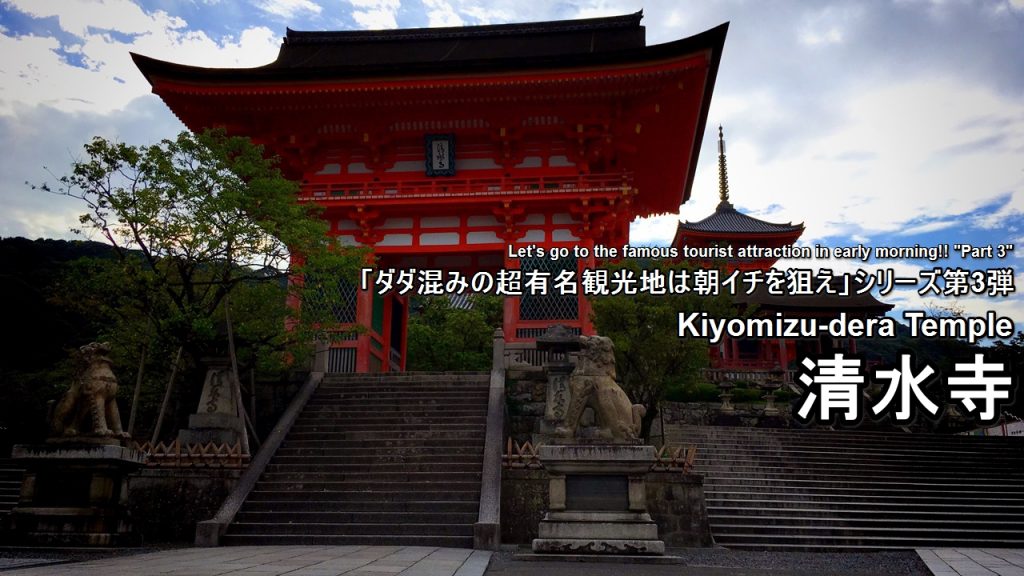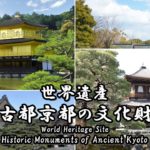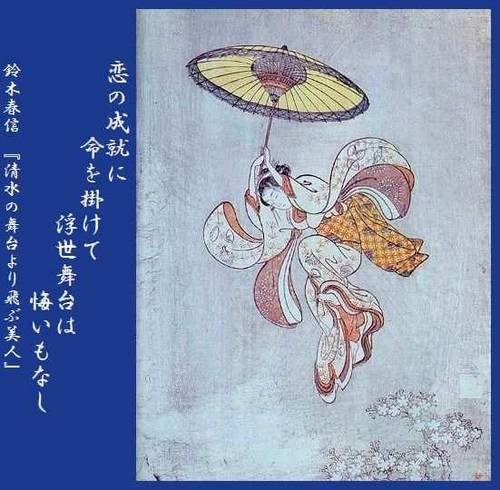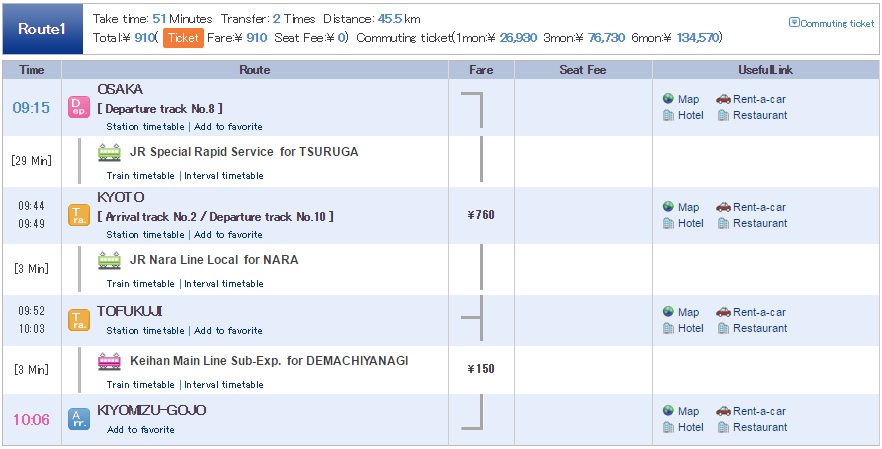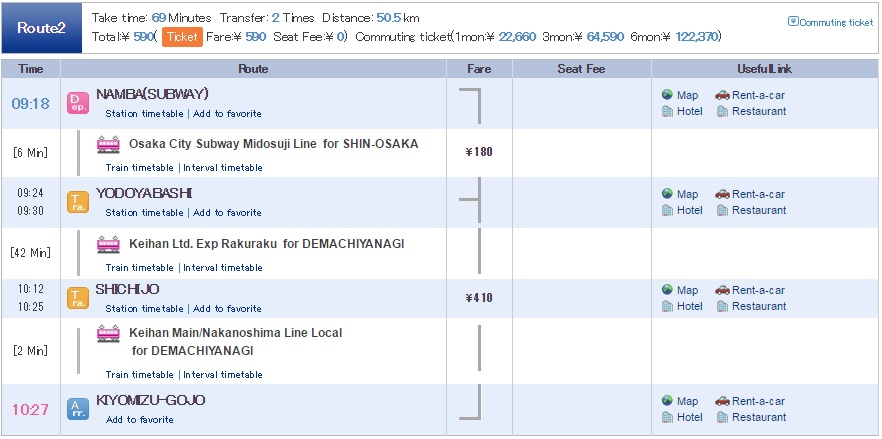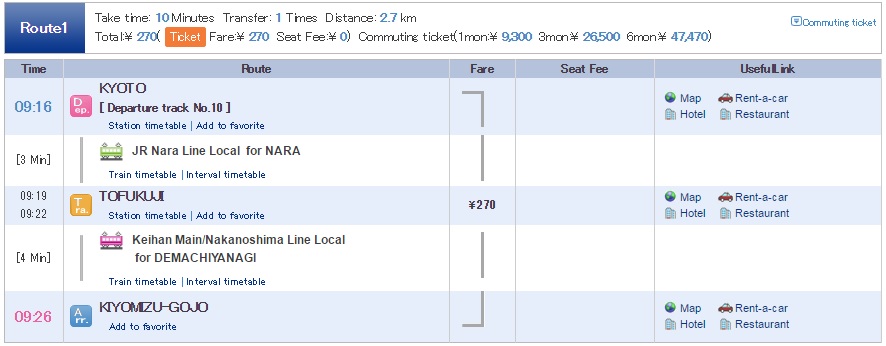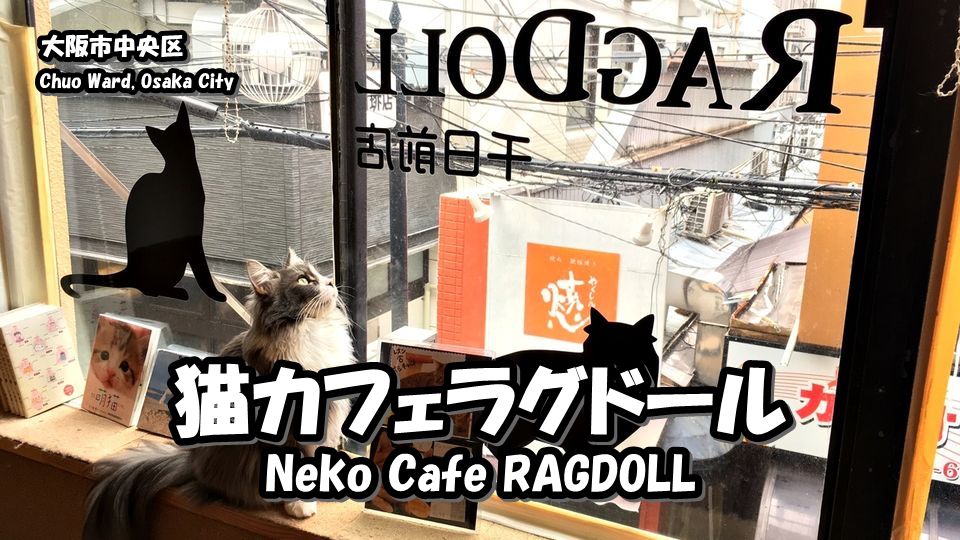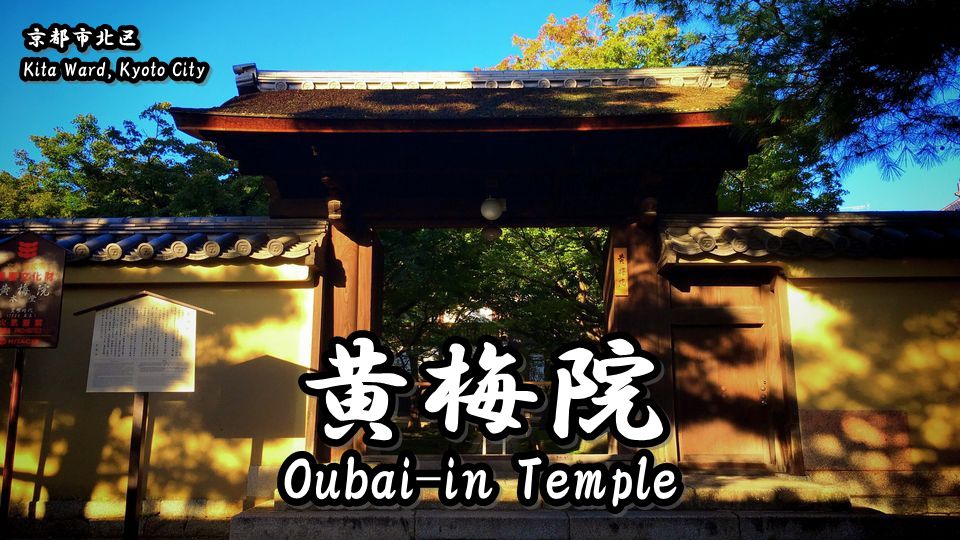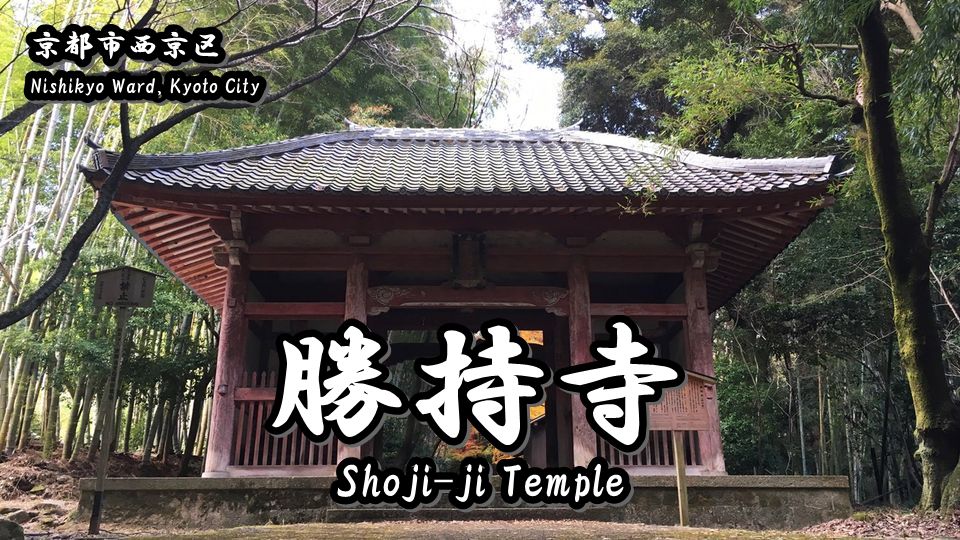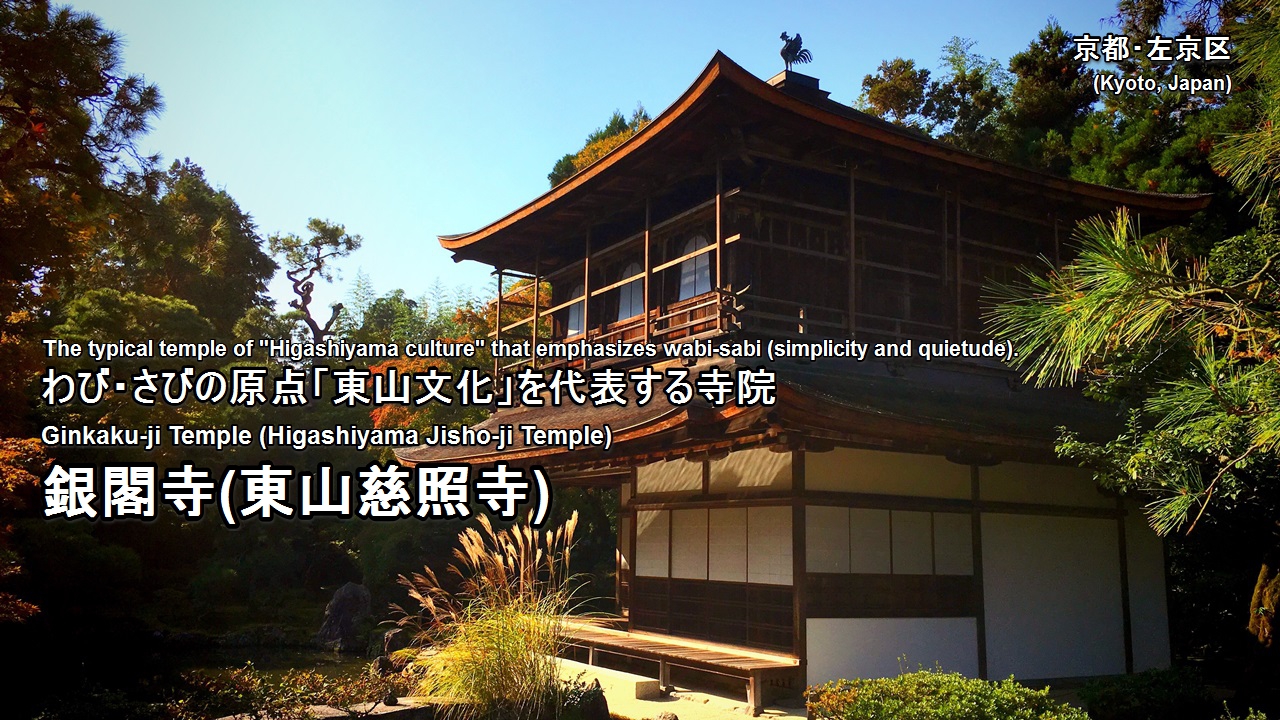Let’s go to the famous tourist attraction in early morning!! “Part.3” is ・・・ Kiyomizu-dera Temple!!
Kiyomizu-dera Temple is the very famous sightseeing spot that Kyoto boasts to the world.
Most of the tourists coming to Kyoto will visit Kiyomizu-dera Temple.
There is the stage of the Kiyomizu-dera temple which is famous for a proverb called “清水の舞台から飛び降りる(to jump off the stage of the Kiyomizu temple(Kiyomizu-no-Butai))” in this temple.
(Do boldly as if you were jumping down from the “Kiyomizu-no-Butai” is a common saying used when people make a bold decision.)
In addition, this temple has been designated as the Michelin green guide ★★★(best rank) and the World Heritage List as part of the cultural assets of ancient capital of Kyoto.
However ・・・,
This temple is too famous and is also crowded very much every day.
If you go to this temple with much effort,
“I want to see the sights slowly in the time when it is not crowded!!”
“I want to take the clean photograph which other person does not appear in!!”
・・・, Don’t you think in this way?
I have some good news for you!!
I visited to see whether Kiyomizu-dera Temple at the early morning is not really crowded.
Contents:
- Is early-morning Kiyomizu-dera Temple not really crowded?
- About World Heritage ‘Historic Monuments of Ancient Kyoto’
- About Kiyomizu-dera Temple
- A proverb called “to jump off the Kiyomizu-no-Butai)”
- Highlights of Kiyomizu-dera Temple
- Jishu-jinja Shrine which is famous as the god of marriage
- Goshuin of Kiyomizu-dera Temple
- How to get to Kiyomizu-dera Temple
1.Is early-morning Kiyomizu-dera Temple not really crowded?
A conclusion : “not crowded” (until around 7:30 a.m.)
By the way, Kiyomizu-dera Temple opens at 6:00 a.m.
Also, please be careful because a tourist and the school excursion student of the group visit this temple when it is past 8:00 a.m.
I visited to Kiyomizu-dera Temple on the first train. I was very sleepy… (*´・ェ・`*)
I arrived to the Deva gate which was the entrance of the temple at 7:10 a.m.
There is no one on the Deva gate!!
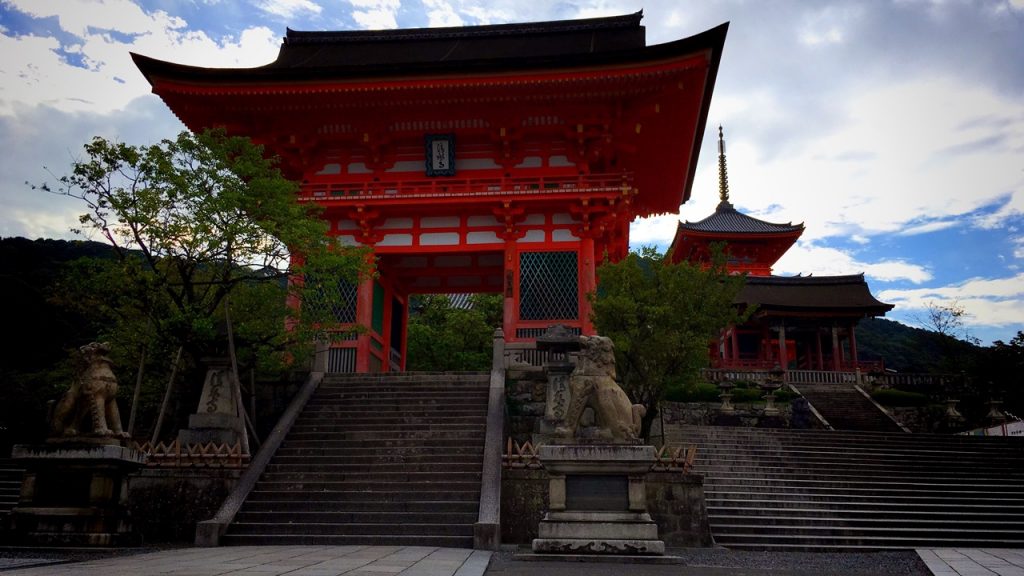
There is no one on the stage of the Kiyomizu temple(Kiyomizu-no-Butai)…!!
I am slightly lonely when I think about the everyday noise of this place.
However, this is a very valuable experience. d(*゚ー゚*)
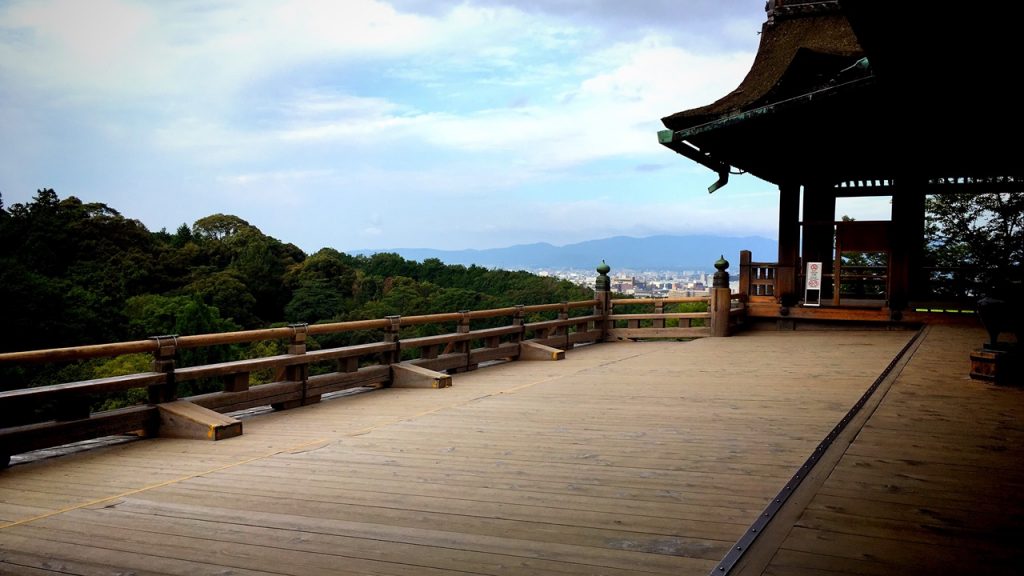
There are no one on the main hall and the stage of the Kiyomizu temple(Kiyomizu-no-Butai)…!!
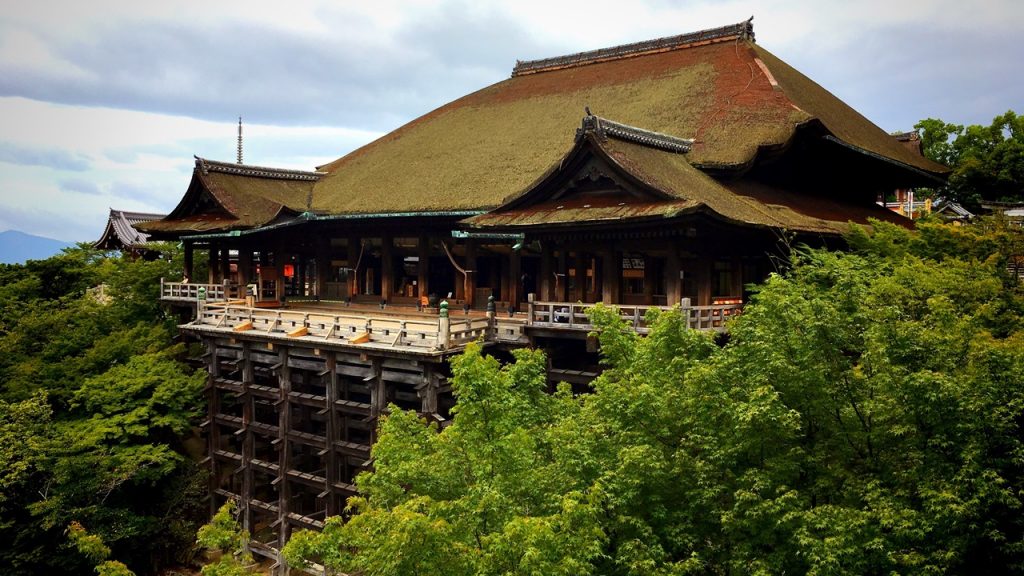
Oh, I am very satisfied.
I was worth having got up early. d(*゚ー゚*)
But, in fact, there was already not a little the tourist around this time of this day.
Because you can visit to this temple at opening-hours(6:00 a.m.) if you stay at Kyoto, please try to visit at opening-hours!!
(I think that this temple is not crowded more than when I visited.)
2.About World Heritage ‘Historic Monuments of Ancient Kyoto’
17 places of temples and shrines of Kyoto are designated in ‘Historic Monuments of Ancient Kyoto’.
↓Details of the “Historic Monuments of Ancient Kyoto” is here.↓
Kiyomizu-dera Temple has been designated as the World Heritage List as part of the cultural assets of ancient capital of Kyoto.
3.About Kiyomizu-dera Temple
Kiyomizu-dera (清水寺), officially Otowa-san Kiyomizu-dera (音羽山清水寺) is an independent Buddhist temple in eastern Kyoto. The temple is part of the Historic Monuments of Ancient Kyoto (Kyoto, Uji and Otsu Cities)UNESCO World Heritage site.[1]
The place is not to be confused with Kiyomizu-dera in Yasugi, Shimane, which is part of the 33-temple route of the Chūgoku 33 Kannon Pilgrimage through western Japan, or the Kiyozumi-dera temple associated with the Buddhist priest Nichiren.
引用(citation):https://en.wikipedia.org/wiki/Kiyomizu-dera
Open:6:00~18:00(The closing time will change with the seasons.)
Admission Fee:400 yen(high school students or older),200 yen(junior high students or younger)
Adress:1-294, Kiyomizu, Higashiyama-ku Kyoto-shi, Kyoto, 605-0862, Japan
Phone Number:+81-75-551-1234
4.A proverb called “to jump off the Kiyomizu-no-Butai)”
“清水の舞台から飛び降りる(to jump off the Kiyomizu-no-Butai)” is one of the Japanese proverbs.
This means to take the plunge, to bet your life.
The stage of the Kiyomizu temple has height of about 13m.
This height is equivalent to a building of 4 stories.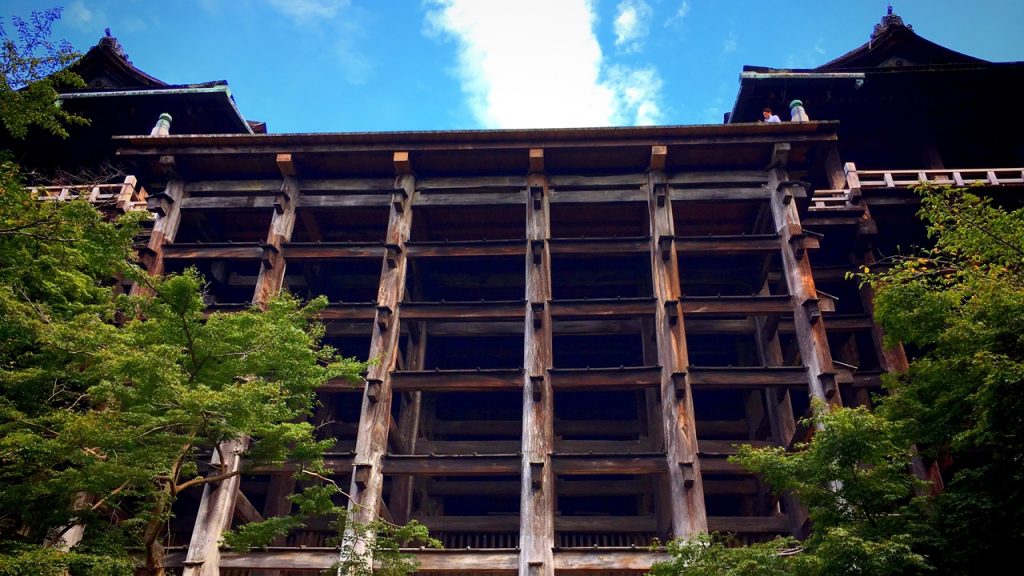
In old days, it was believed that “Their dreams come true when they jump off the Kiyomizu-no-Butai”.
Therefore there was really a lot of people who jumped off this stage.
(Research of ancient documents conducted by Kiyomizu-dera Temple shows that 234 people actually jumped down from the Butai from 1694 to 1864 and 85.4% of them survived.)
This is an ukiyoe print drawn by Harunobu Suzuki who is an ukiyoe artist of the middle of Edo era.
“The beautiful woman who jump off the Kiyomizu-no-Butai”
引用(citation):http://ufoboat.sakura.ne.jp/dodoitunikki/201010/201010.html
It’s pretty obvious, but… Don’t you ever do anything like that.
5.Highlights of Kiyomizu-dera Temple
Let’s start by looking at the highlight of Kiyomizu-dera Temple.
Ths is 仁王門(Deva gate) which is the entrance of the temple.
This is important cultural property which was built in the Muromachi era.

This pair of stone guardian dogs opens their mouth both. This is very unusual.
(As for the general pair of stone guardian dogs, a pair of stone guardian dogs of the left is closing a mouth.)

This is the 馬駐(Uma-todome) which had been used as a stable near a Deva gate.
This is important cultural property which was built in the Muromachi era.
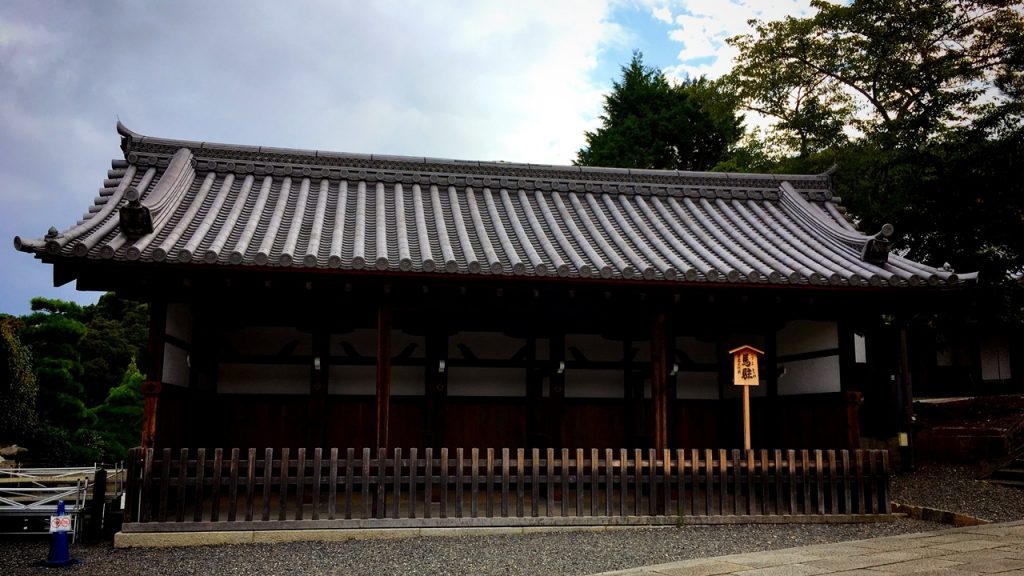
This is Zenko-ji-do temple which was built in front of a Deva gate.
This temple is the tenth temple of the Rakuyo 33 Kannon Pilgrimage which to enshrine Nyoirin Kannon (the Bodhisattva of Compassion).
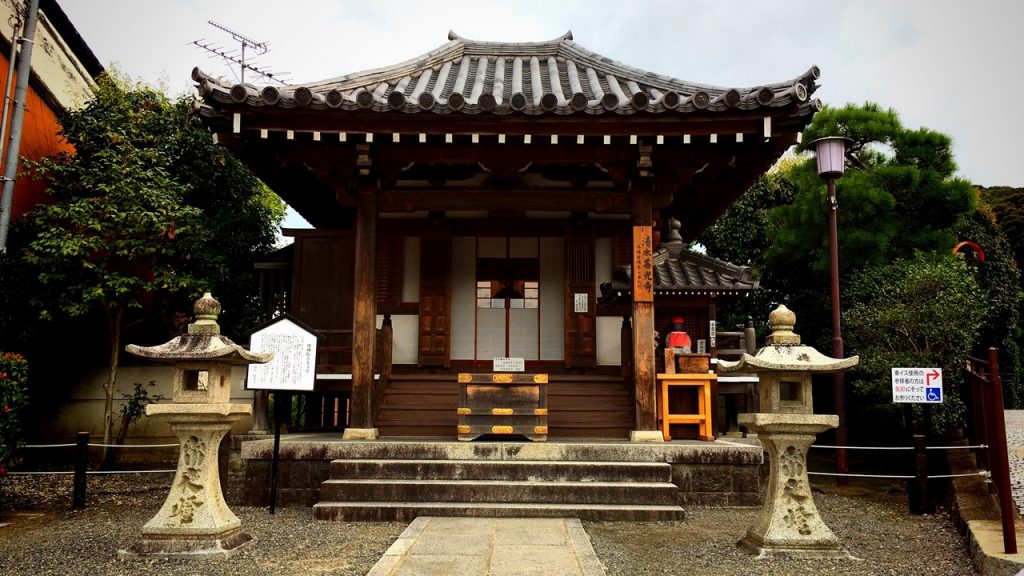
This is the 西門(west gate).
This gate is important cultural property which was rebuilt in 1631.
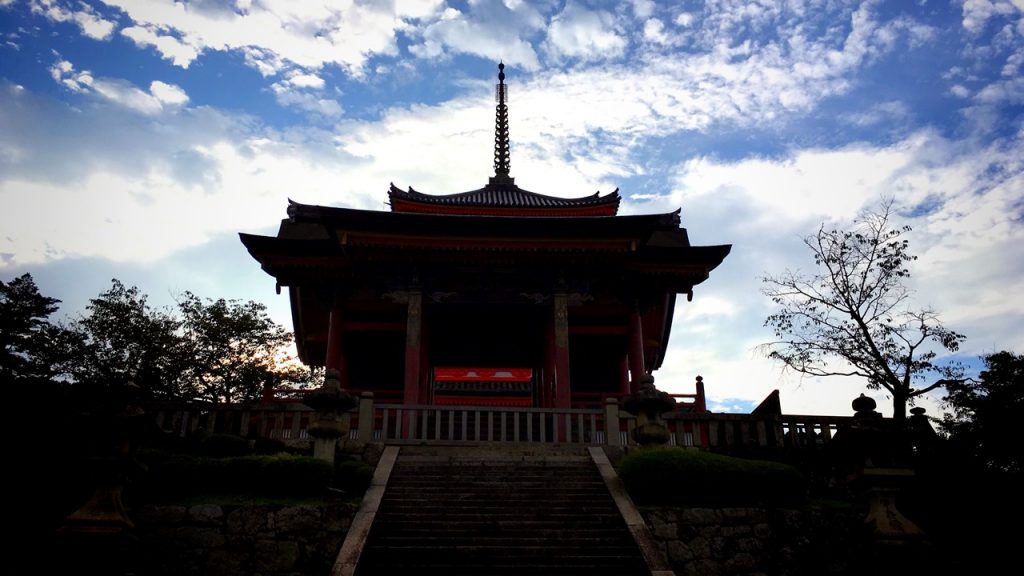
The image of the guardian deity of the east in the shape of a dragon is put to the west gate in substitution for a pair of stone guardian dogs.
This image is a very new image built in 2015.
(The Eastern bloc of Kyoto where there is Kiyomizu-dera Temple is said to be the land which is protected by “a guardian deity of the east in the shape of a dragon” from old days.)
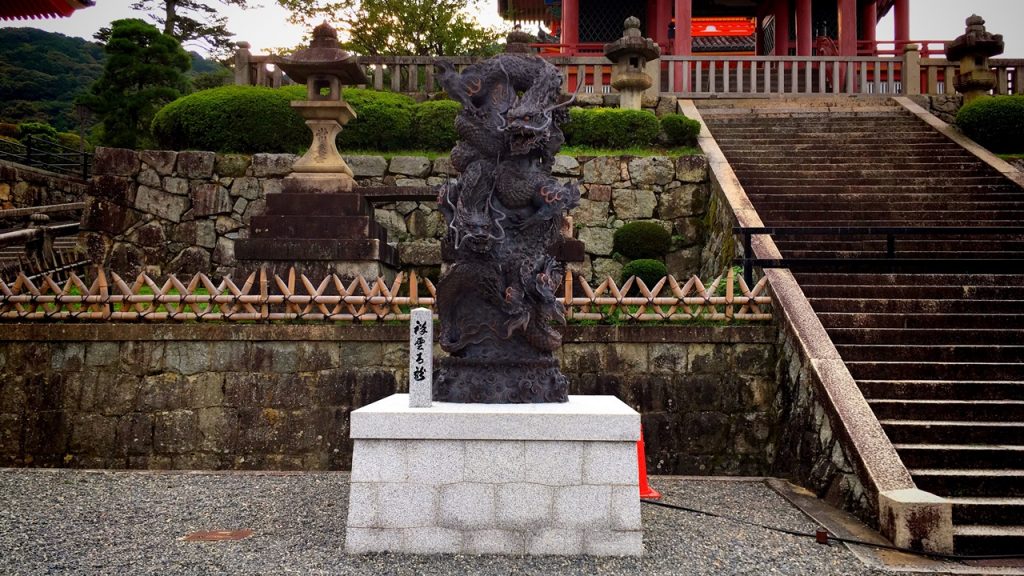
There is the 鐘楼(bell tower) when we pass through the Deva gate.
This building is important cultural property which was rebuilt in 1607.
The general bell tower is built at four pillars. However, this bell tower is built at six pillars.
This is very unusual. (○´艸`)

This is the 随求堂(Zuigu-do).
This building is the main hall of the Jishin-in temple which is a minor Zen temple of Kiyomizu-dera Temple which was rebuilt in 1718.

The triple tower which was painted with cinnabar red gets a lot of looks conspicuously.
This building is an important cultural property which was rebuilt in 1632.
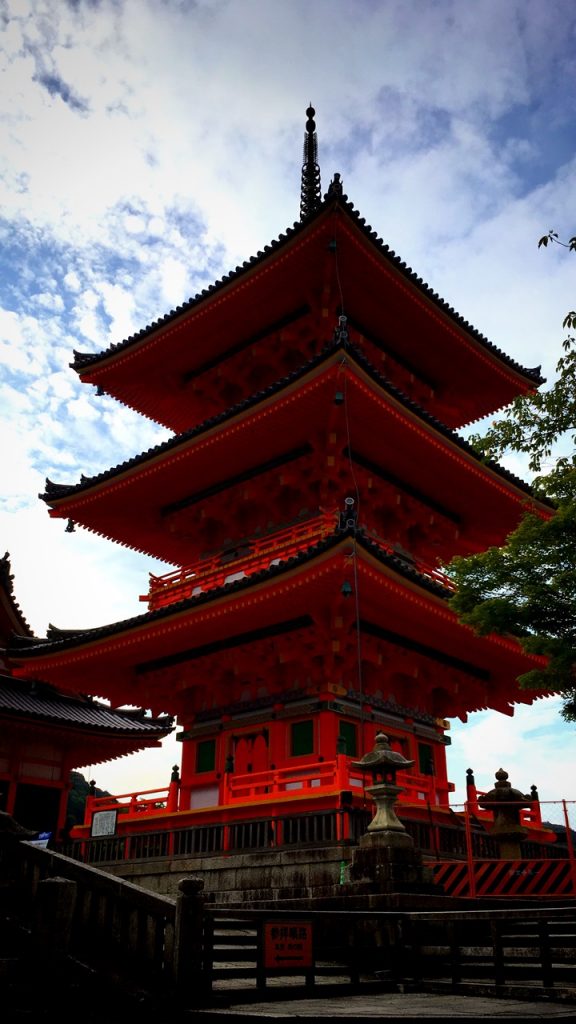
This triple tower was dismantled in 1987 and was repaired.
And, the richly colored pattern indicating the Momoyama style was restored on that occasion.
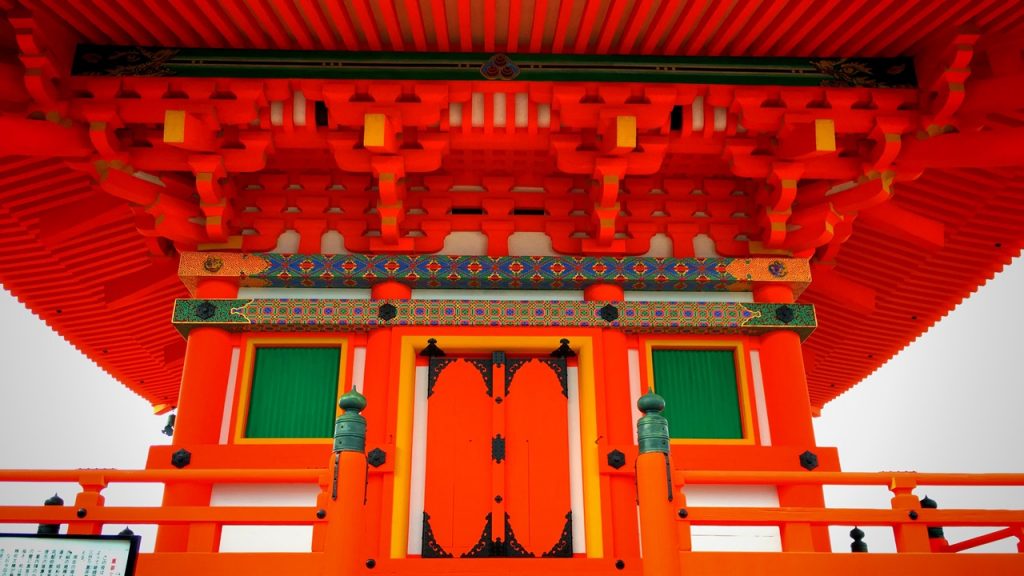
This is the 経堂(Kyo-do) which is built beside a triple tower.
This building is an important cultural property which was rebuilt in 1633.
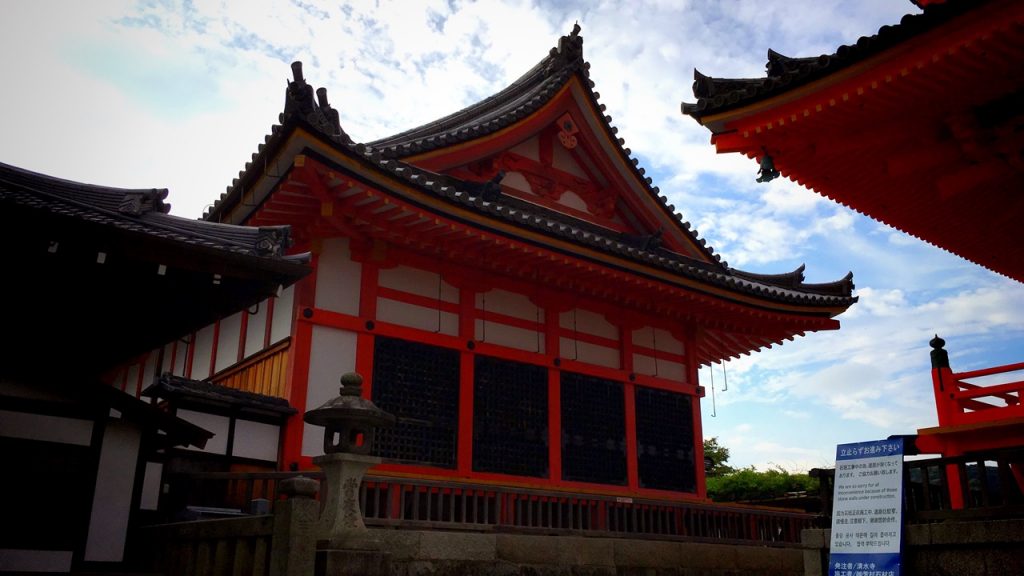
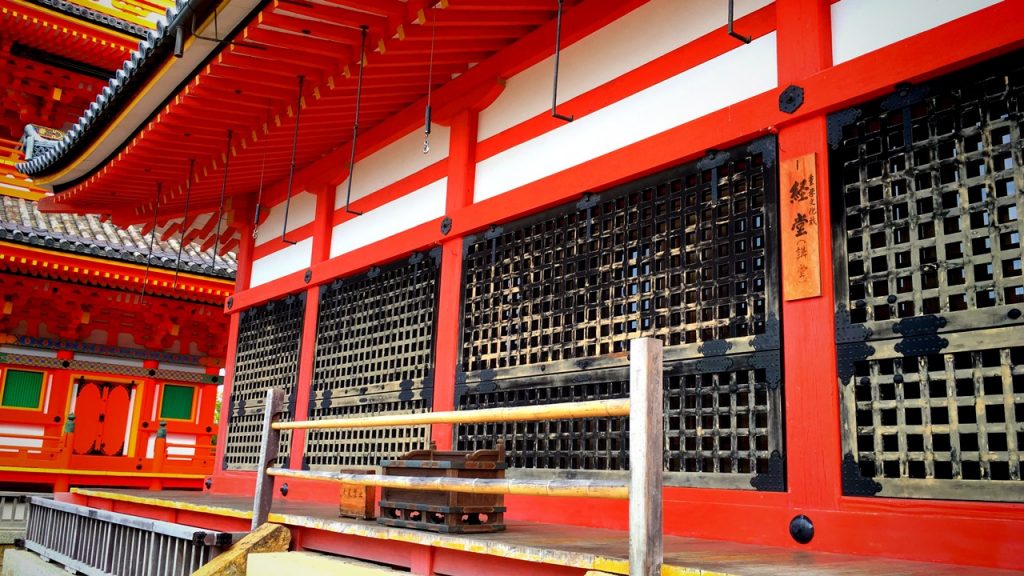
The 開山堂(Kaizan-do) is an important cultural property which was rebuilt in 1633.
Because the image of the Mr. and Mrs. Tamuramaro Sakanoueno having a relation for the foundation of Kiyomizu-dera Temple deeply in this building is worshiped, it is also called the 田村堂(Tamura-do).
There is a receptionist desk in the front of this building.
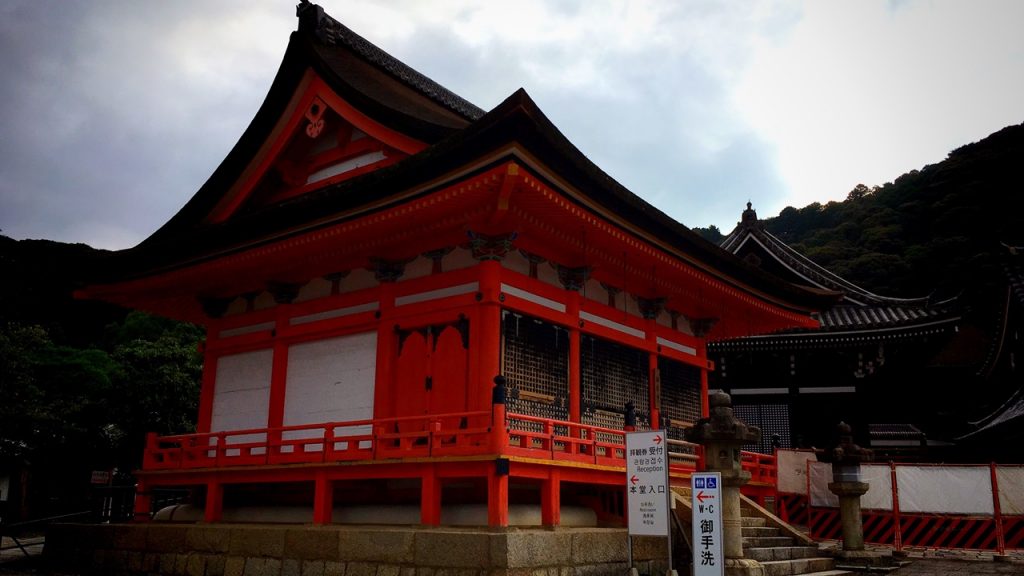
Let’s buy a ticket in a reception desk.
Admission fee is 400 yen (Adults).
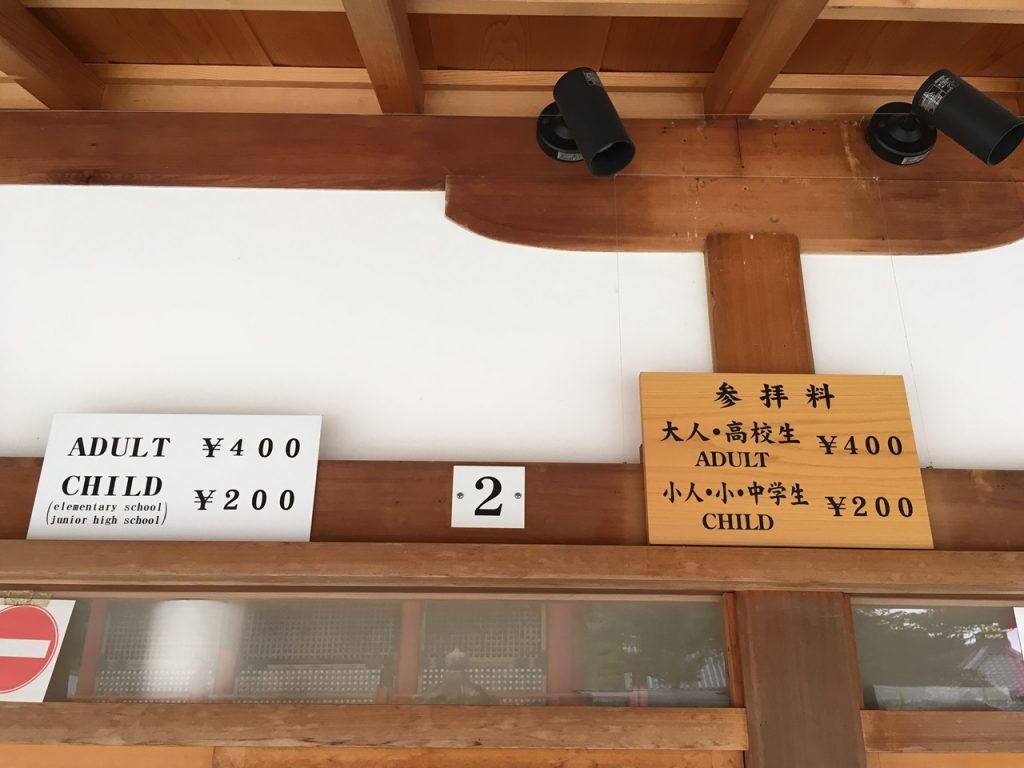
This is the 朝倉堂(Asakura-do).
This building is an important cultural property which was rebuilt in 1633.
Because this building has been donated by Sadakage Asakura who was a feudal lord of Echizen, it is called the 朝倉堂(Asakura-do).
This temple is also the thirteenth temple of the Rakuyo 33 Kannon Pilgrimage which to enshrine Senju Kannon (the Buddhist Goddess of Mercy with a 1000 arms).
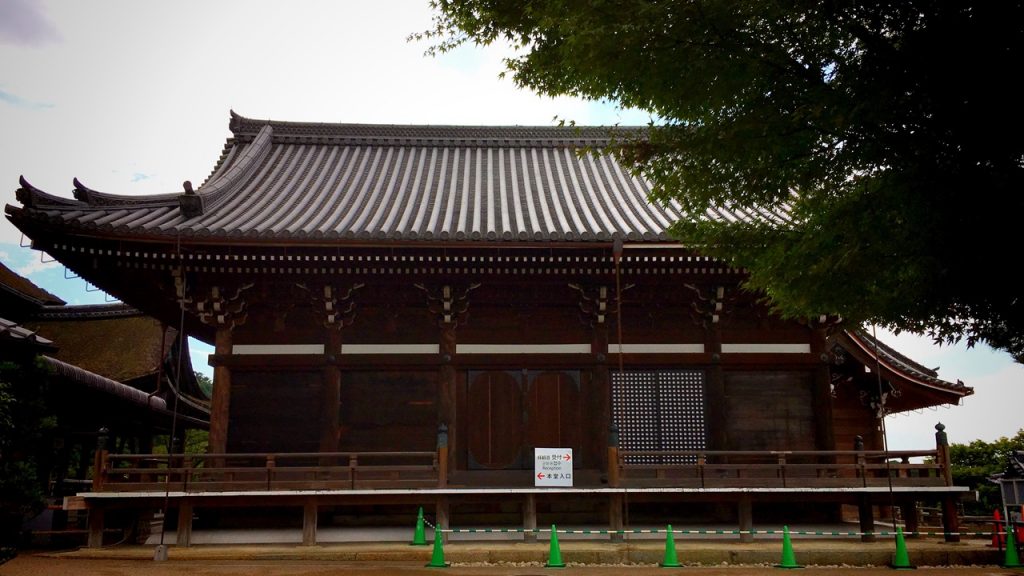
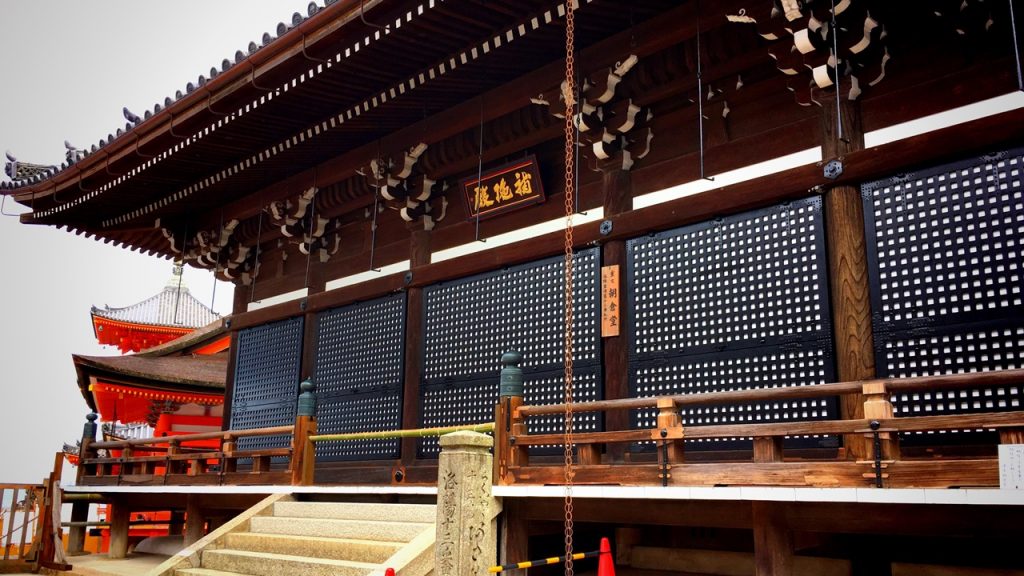
We can enter the 本堂(main hall) where there is the stage of the Kiyomizu temple from here.
Let’s show the ticket which we purchased beforehand here.
The 本堂(main hall) has been donated by Iemitsu Tokugawa who is 3th General of the Edo Shogunate.
In addition, this building was rebuilt in 1633, and has been appointed to a national treasure.
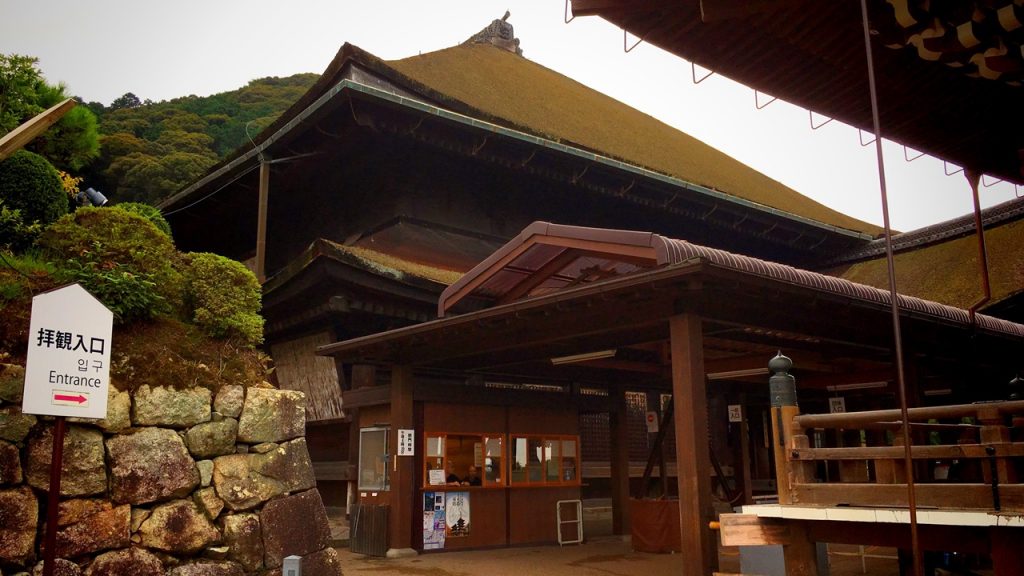
The 本堂(main hall) is the huge building which has a full length of about 36m.

The famous stage of the Kiyomizu temple is spreading out in the front of the main hall.

The base supporting the stage of the Kiyomizu temple is built by technique called “懸造(kakezukuri)” that does not use the nail at all.
This base was made by joining 139 pieces of the pillar of the zelkova.(○´艸`)

This is a view from the stage of the Kiyomizu temple.
We can look at 子安塔(Koyasu tower) and Kyoto Tower etc from here.
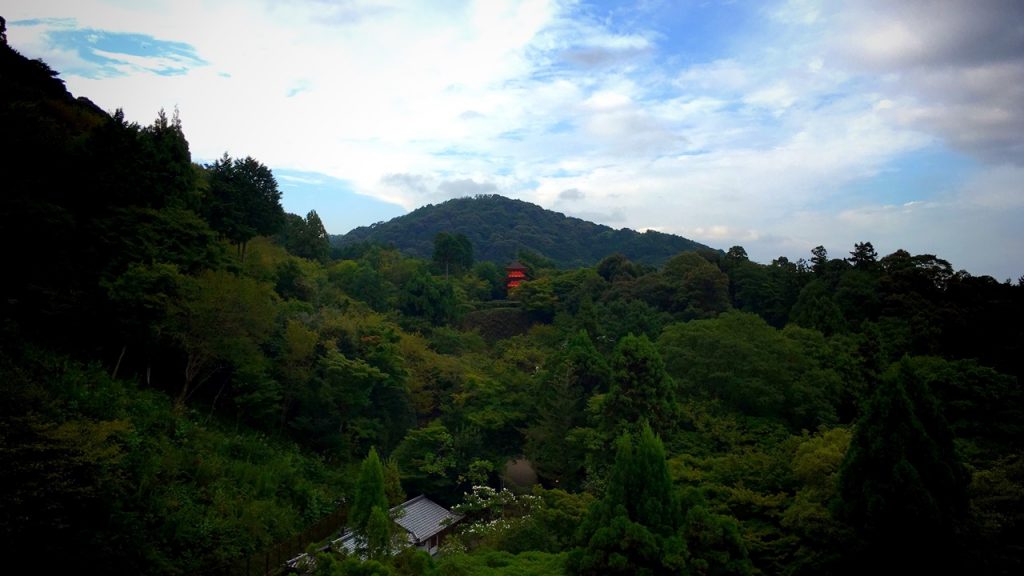
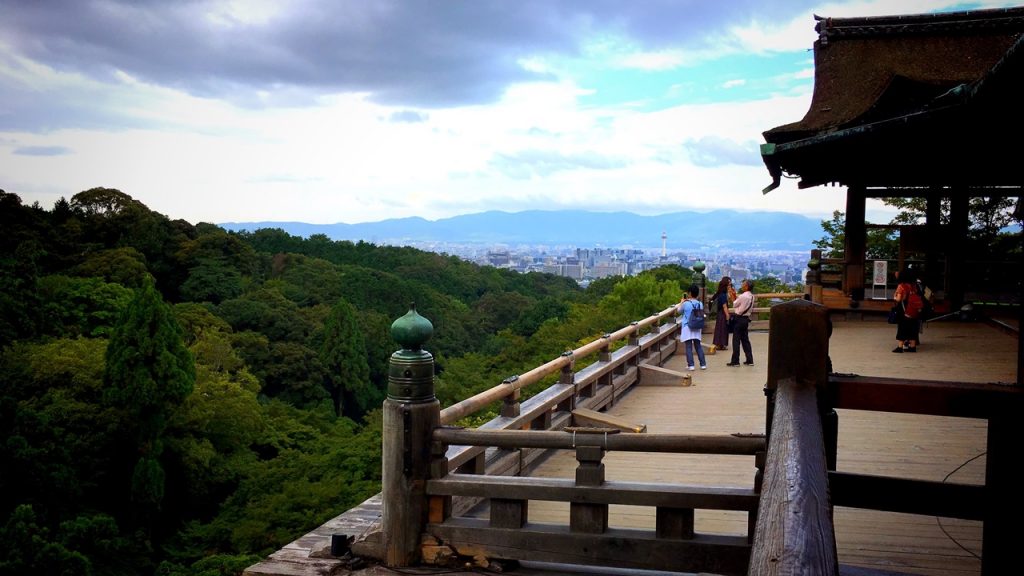
“Standing Statue of Senju Kannon”, “Standing statue of Vaisravana” and “Standing Statue of Jizo Bosatsu” which are ordinarily kept hidden from view is enshrined in the main hall.
(These Buddha statues are not ordinarily open to the public.)

This is the 出世大黒天(Shusse Daitokuten) which is enshrined in the west of the main hall.
This God is God of the business prosperity.
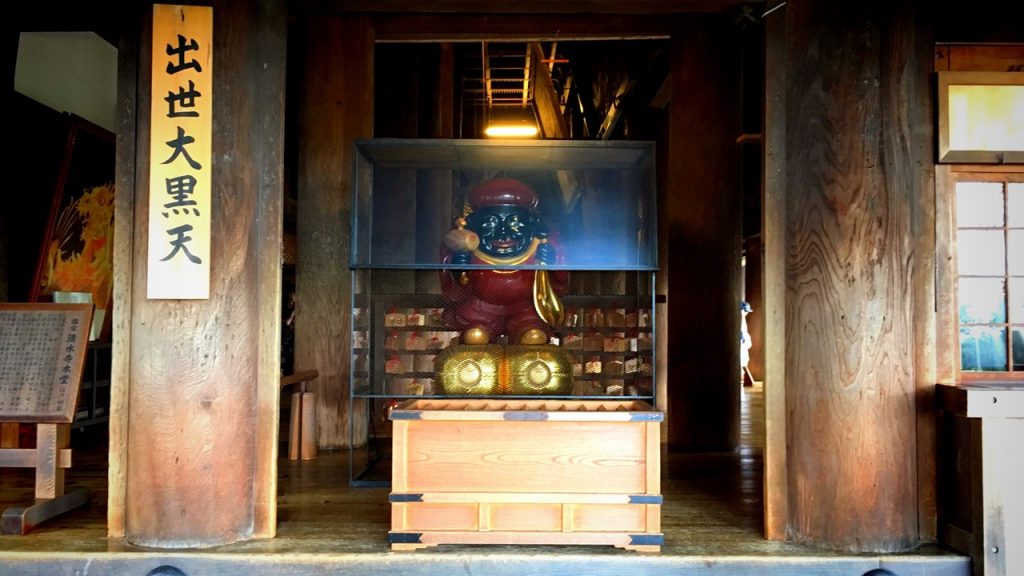
This is the ふれ愛観音(Fureai Kannon) which is enshrined in the main hall.
This Buddha statue was made for the inconvenient person of eyes by hand to be able to worship it by touching.

The one phrase of the Sutra of Avalokitesvara is published in the East of the main hall.
We can read this one paragraph with “慈眼視衆生(jigenjishujo) 福聚海無量(fukujukaimuryo)”.
The meaning of these phrase is “The Kannon is watching us kindly anytime. We can find happiness if I follow the Kannon.”.
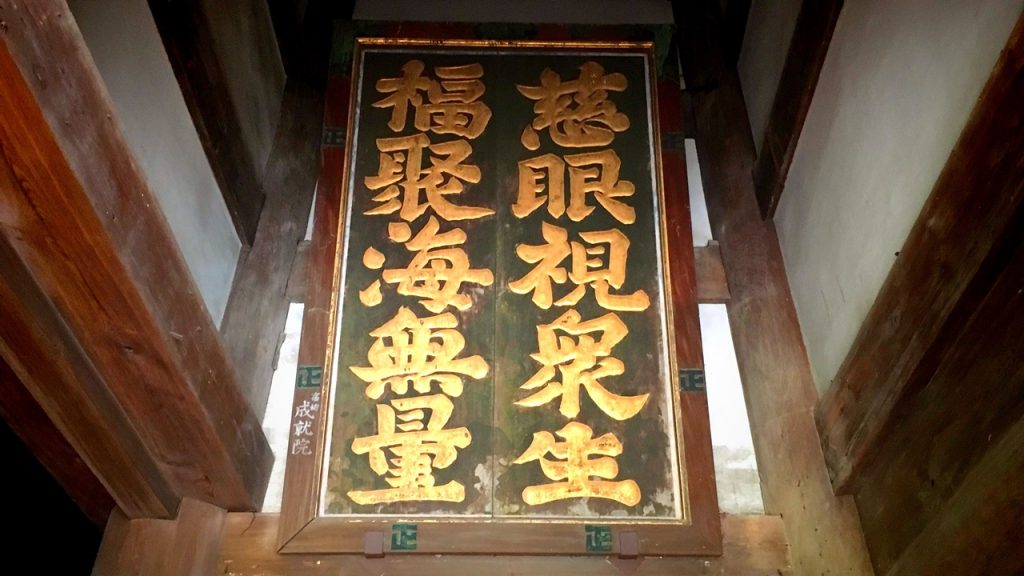
After we pass through the main hall, we will see the 地主神社(Jishu-jinja Shrine). The details will be described later.
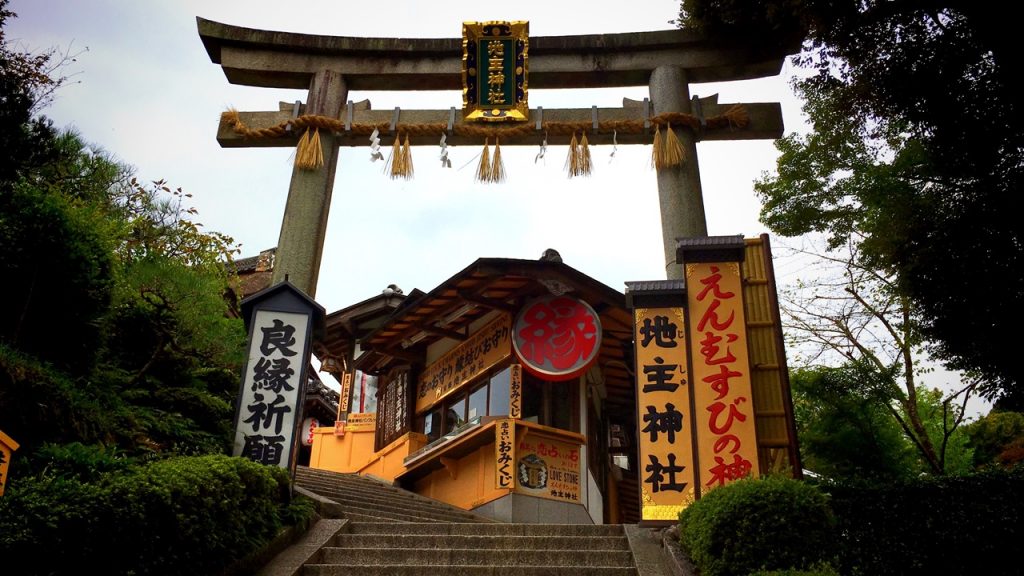
This is the 釈迦堂(Shaka-do).
This building is important cultural property which was rebuilt in 1631.
There are the 阿弥陀堂(Amida-do) and the 奥の院(Okuno-in) beside the 釈迦堂(Shaka-do), but cannot see that for repair work now.

We can overlook the main hall and the stage of the Kiyomizu temple from the side of the 奥の院(Okuno-in).
It is a famous photography spot here. (○´艸`)
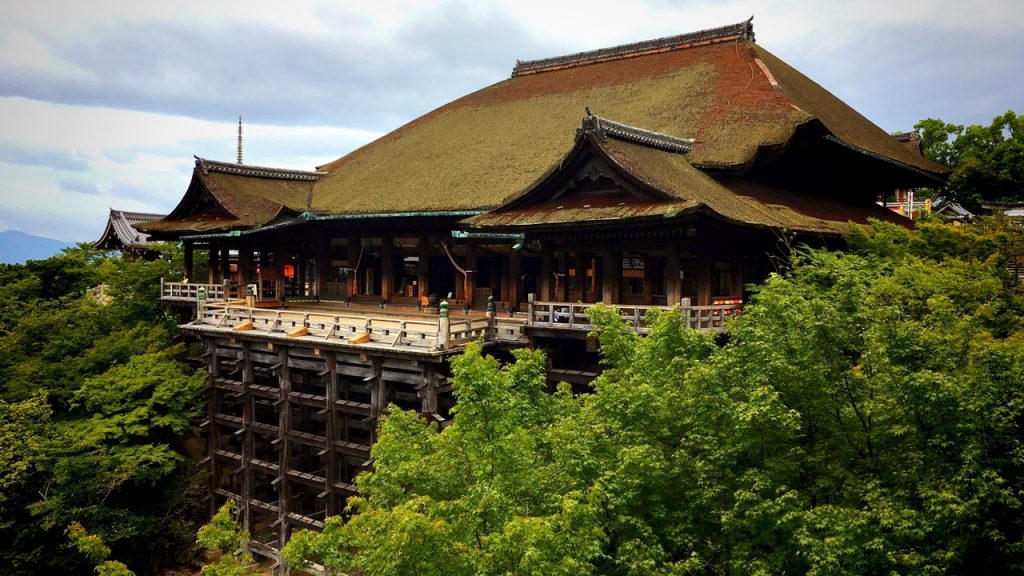
I tried to photograph it from another angle. (○´艸`)
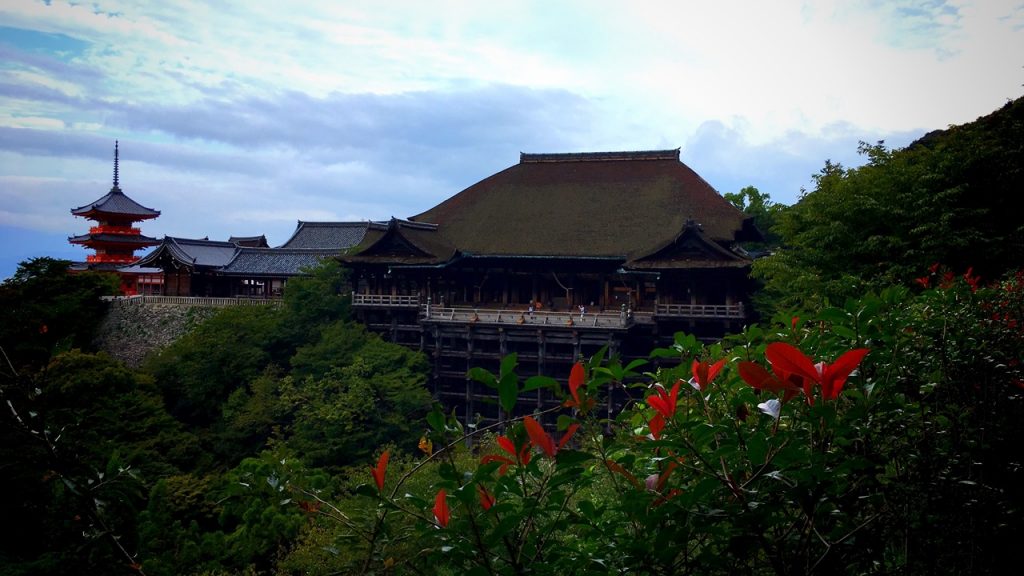
This is an entrance to the 泰産寺(Taizan-ji Temple).
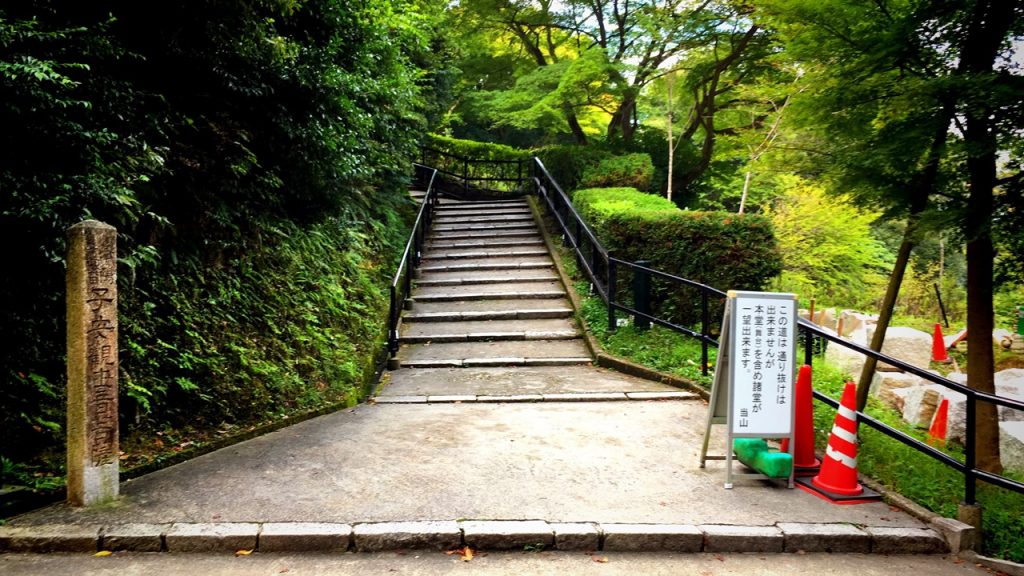
The scenery of the main hall to look at from here is also very beautiful.
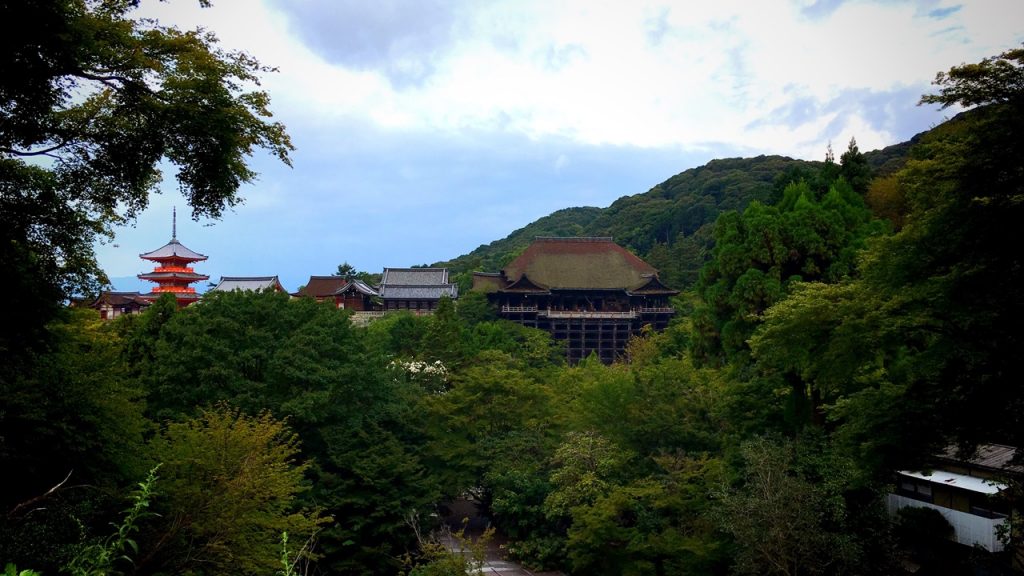
This is the 子安塔(Koyasu tower) of the 泰産寺(Taizan-ji Temple).
This building is important cultural property which was rebuilt in 1500.
In old days, this building had been built near the Deva gate , but it was removed, and reconstructed in the current place in 1911.
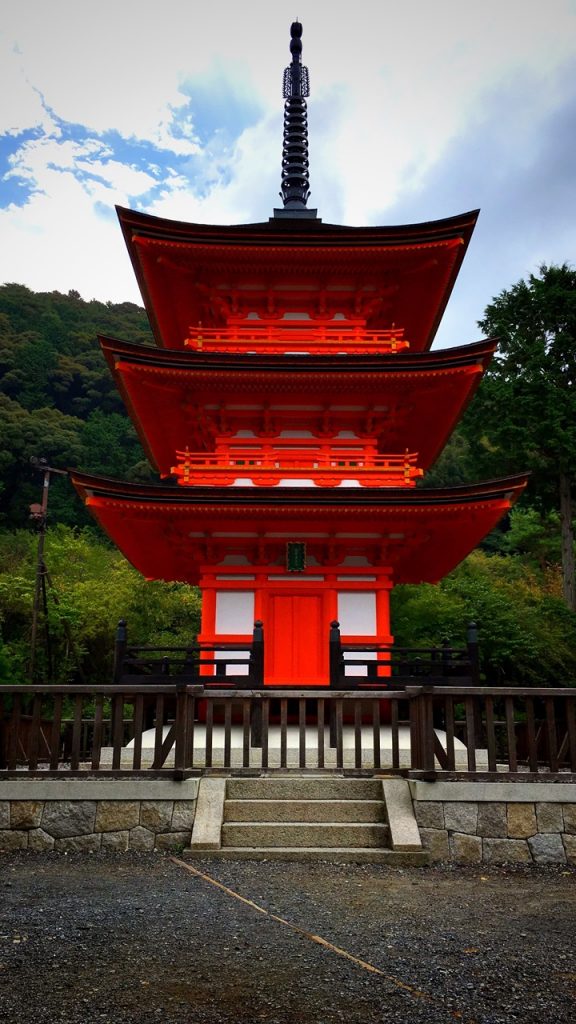
This building is the main hall of the Taizan-ji Temple which is a minor Zen temple of Kiyomizu-dera Temple.
Because the word of “泰産(Taizan)” has the meaning of the easy delivery, The Taizan-ji Temple is believed in as God of the easy delivery.
This temple is also the fourteenth temple of the Rakuyo 33 Kannon Pilgrimage which to enshrine Senju Kannon (the Buddhist Goddess of Mercy with a 1000 arms).

This is the 音羽の瀧(Otowa no taki Falls).
From old days, the flowing water from this waterfall is called “water of gold” or “water of human life”, and it is popular as the water of the purge.
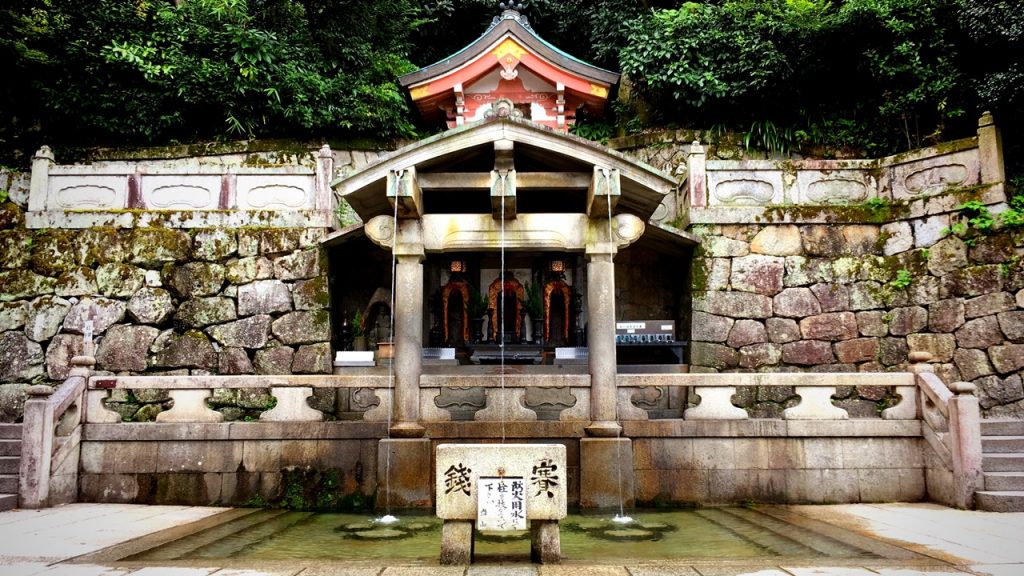
We can look up at the stage of the Kiyomizu temple from the approach to a shrine which is under the main hall.
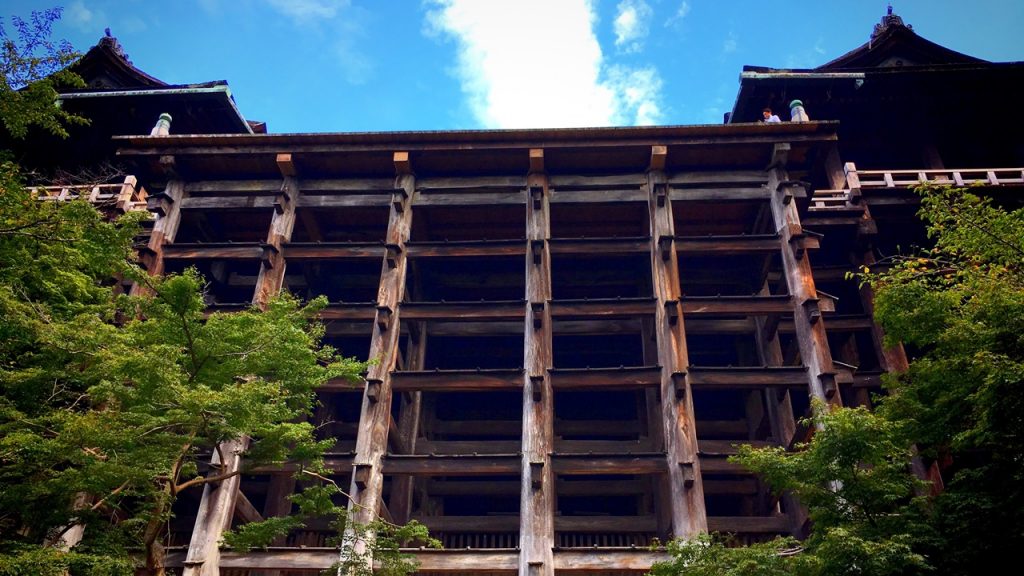
The main hall and the stage of Kiyomizu-dera Temple have been built on the very steep slope.
Therefore, the stone wall of several levels have been built to support the huge main hall and stage.
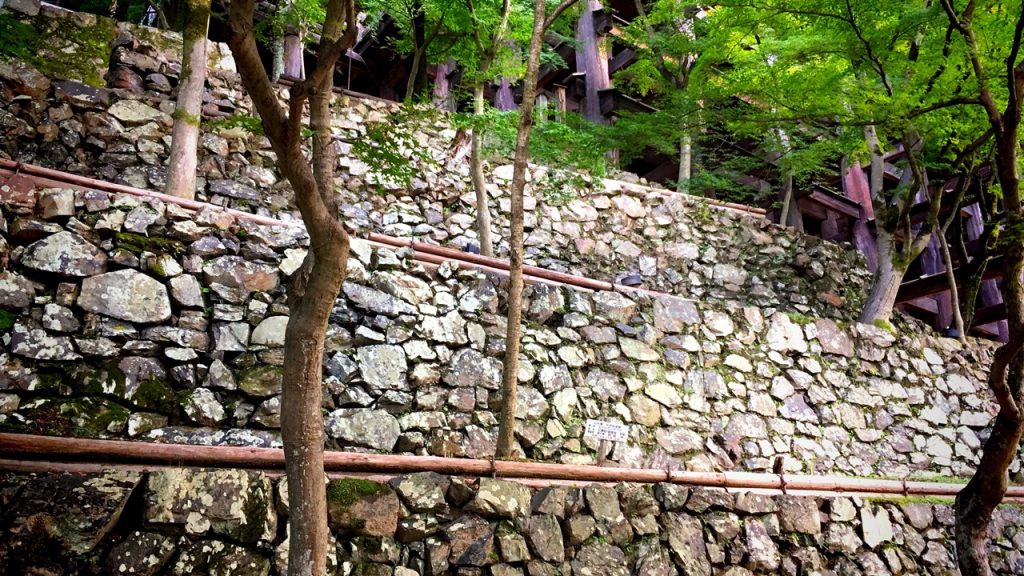
This stone wall is a big building, too.
I think that it is very excellent stone wall even if we compare it with stone wall of the general Japanese castle.
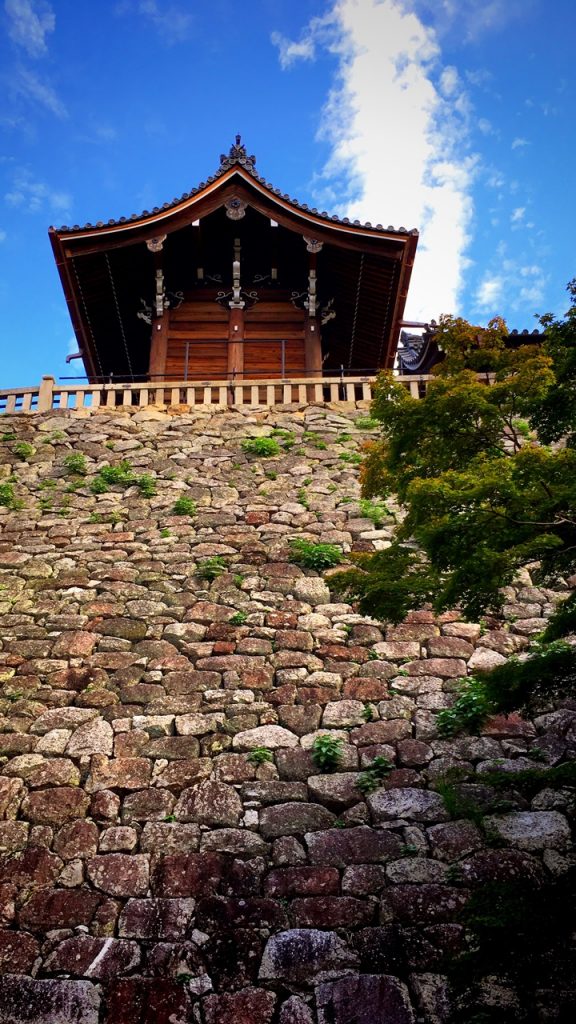
This is the 北総門(Kitasoumon) which has been built beside a bell tower.
This is an important cultural property.

After we pass through the 北総門(Kitasoumon), we will see the three text monuments.
Poetry to be related to “月照上人(Gessho-jonin)”, “信海上人(Shinkai-jonin)” and “西郷隆盛公(takamori Saigo)” are engraved into these monument.
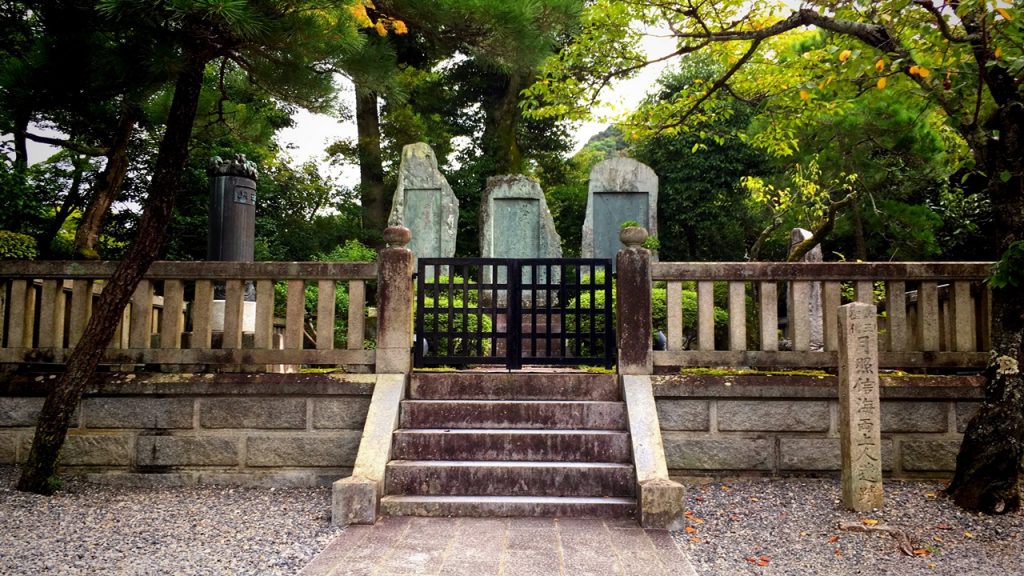
This is the 中興堂(Chuko-do).
This building is a comparatively new building which was built in 1997.
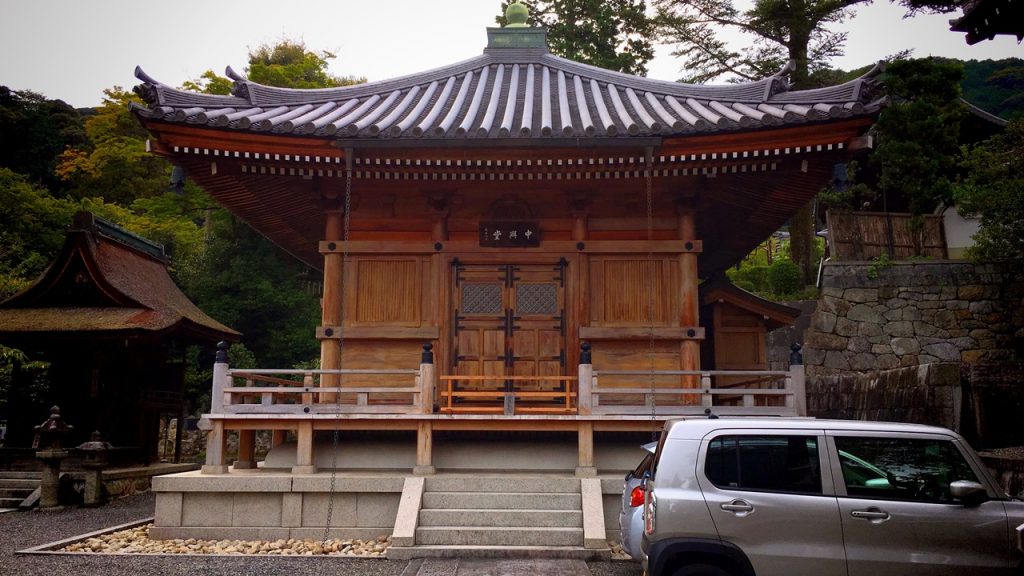
This is the 春日社(Kasuga-sha).
This building is an old building which was rebuilt in the Muromachi era.
Kasuga Daimyojin who is the guardian angel of Kiyomizu-dera Temple is worshiped.
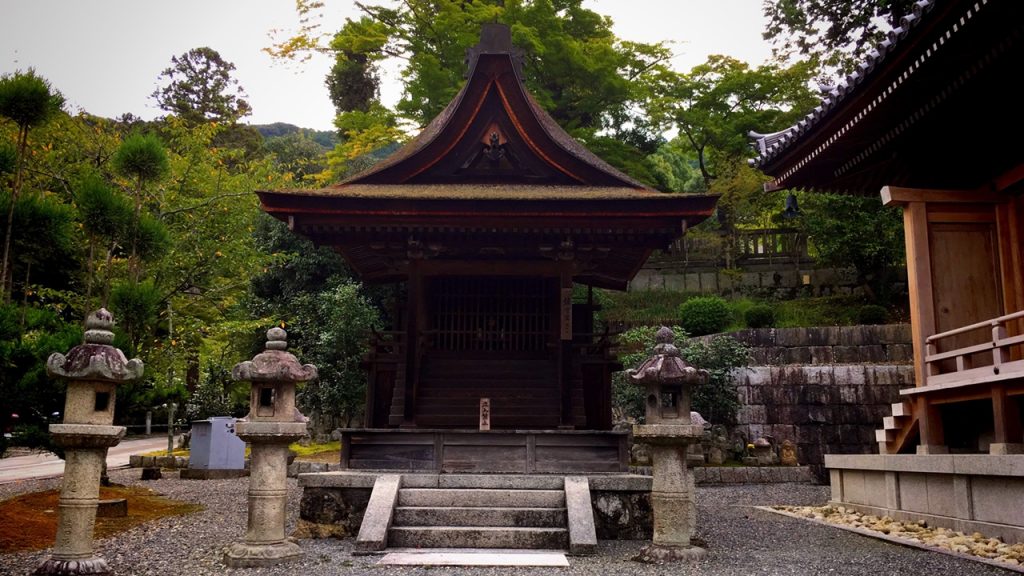
There is the stone Buddha group on the approach to a shrine on the left side of the temple.
This stone Buddha group was made by abandoned Buddha statue because of the case of Haibutsu-kishaku (a movement to abolish Buddhism) in the Meiji era.
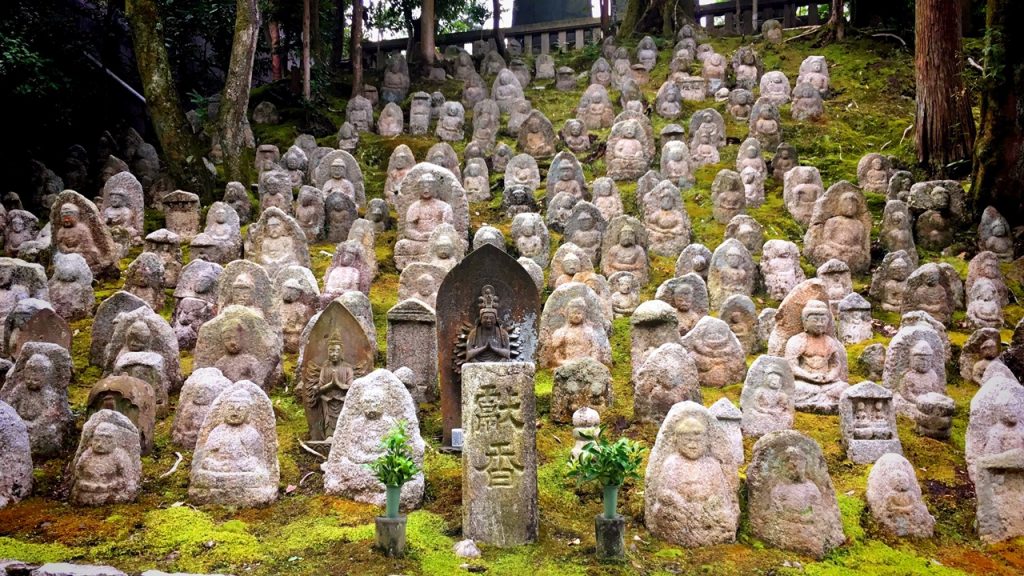
This is the 成就院(Joju-in).
This temple is the Honbo(main priest’s residence of Kiyomizu-dera) Temple.
A principal idol of this temple is the “十一面千手観音(eleven-faced one thousand-armed Kannon Bosatsu)”.
In addition, in this temple, there is a Japanese garden called “a garden of the moon” which has been designated as a natural beauty spot.
This garden is not ordinarily open to the public. (Only open to the public on specific days in spring and autumn.)

6.Jishu-jinja Shrine which is famous as the god of marriage
The “地主神社(Jishu-jinja Shrine)” is the Shinto shrine which is built to worship God of the land beforehand when a temple and a Shinto shrine are built.
The Shinto shrine which is the most famous in these “地主神社(Jishu-jinja Shrine)” is “地主神社(Jishu-jinja Shrine) which is in the Kiyomizu-dera Temple”.
The history of this Shinto shrine is very old. and, according to another view, there is the opinion which has been believed in the days of the age of the gods.
In addition, this Shinto shrine was local deity Corporation of Kiyomizu-dera Temple until the Edo era.
However, this Shinto shrine became an independent Shinto shrine by the gods and Buddha separation law of the Meiji era.
This is the entrance of the Shinto shrine.

Now, this Shinto shrine is popular as “the god of marriage“.

This is an image of the “大国主命(Okuninushinomikoto)” who is god of marriage.
There is the image of the white rabbit of Inaba, too. (○´艸`)

The 本殿(main hall) has been donated by Iemitsu Tokugawa who is 3th General of the Edo Shogunate.
This building is an important cultural property which was rebuilt in 1633.
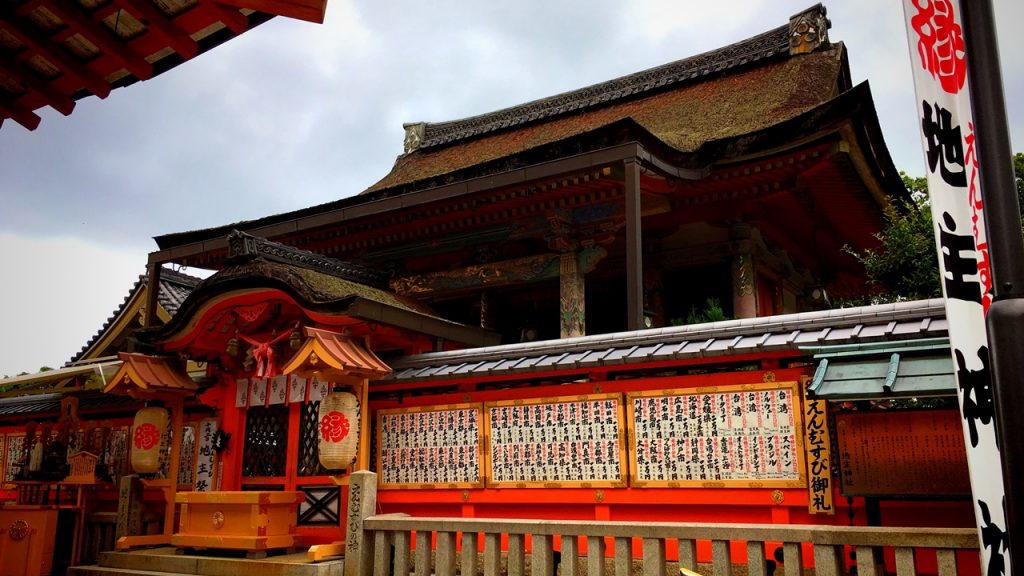
The 拝殿(Hai-den) is important cultural property, too.
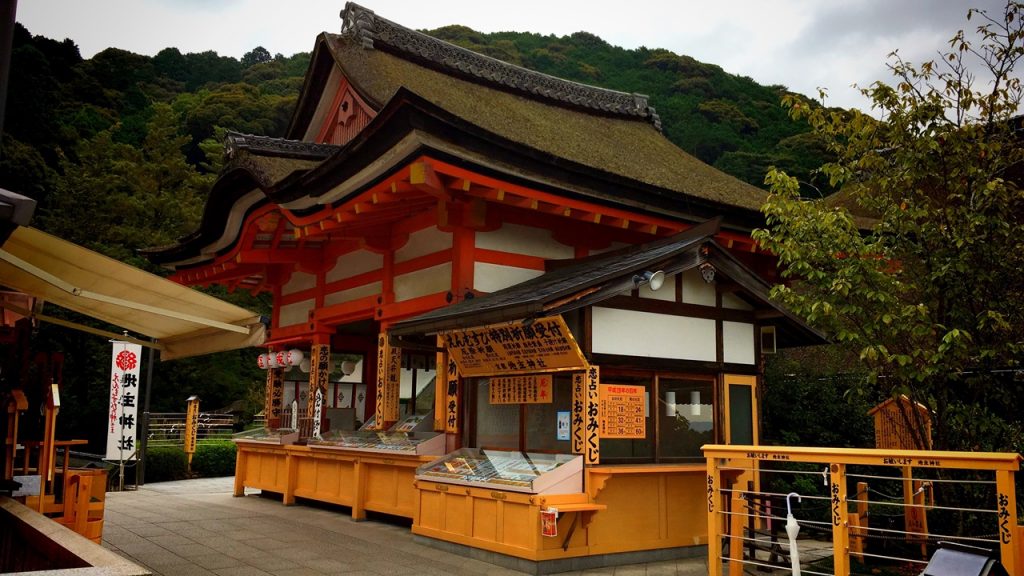
In addition, the highlight of the 拝殿(Hai-den) is a ceiling.
The painting of clouds and dragons is drawn on the ceiling.
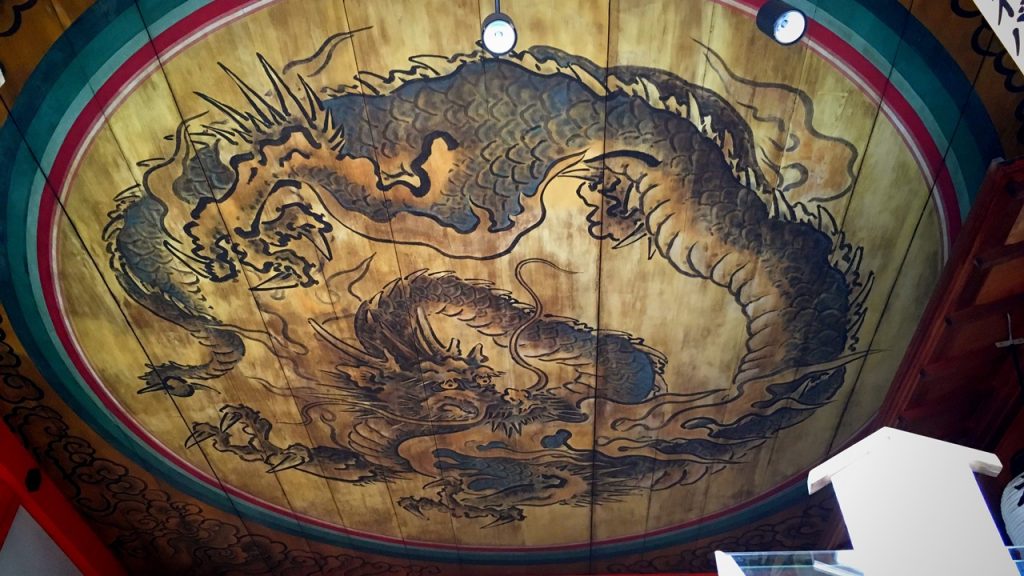
The ceiling painting of clouds and dragons is the work of Motonobu Kano, and this is important cultural property.
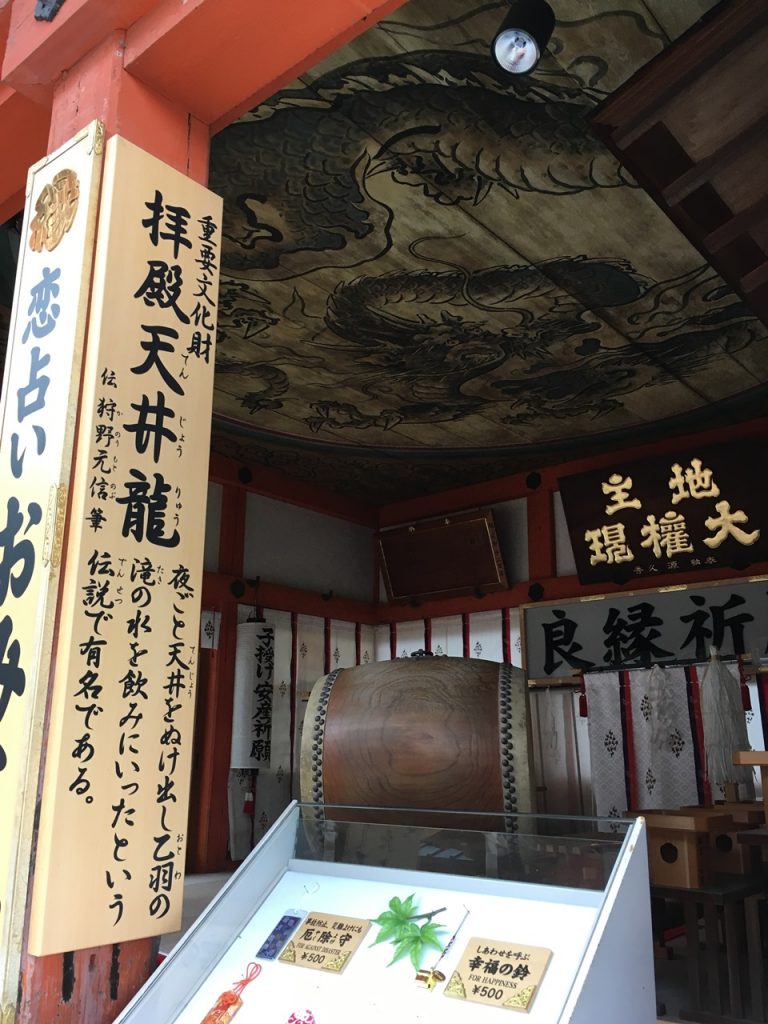
The 総門(Sou-mon) of this place is important cultural property, too.
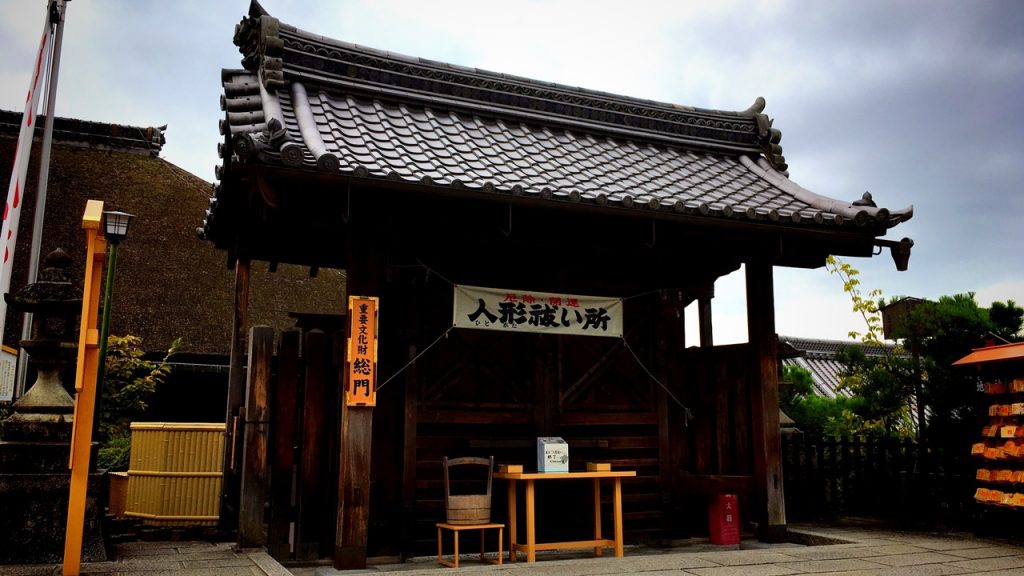
The stone called “the stone of the love fortune-telling” is put in right and left of the main hall.
When we closed our eyes between these stones and could walk, a wish come true.
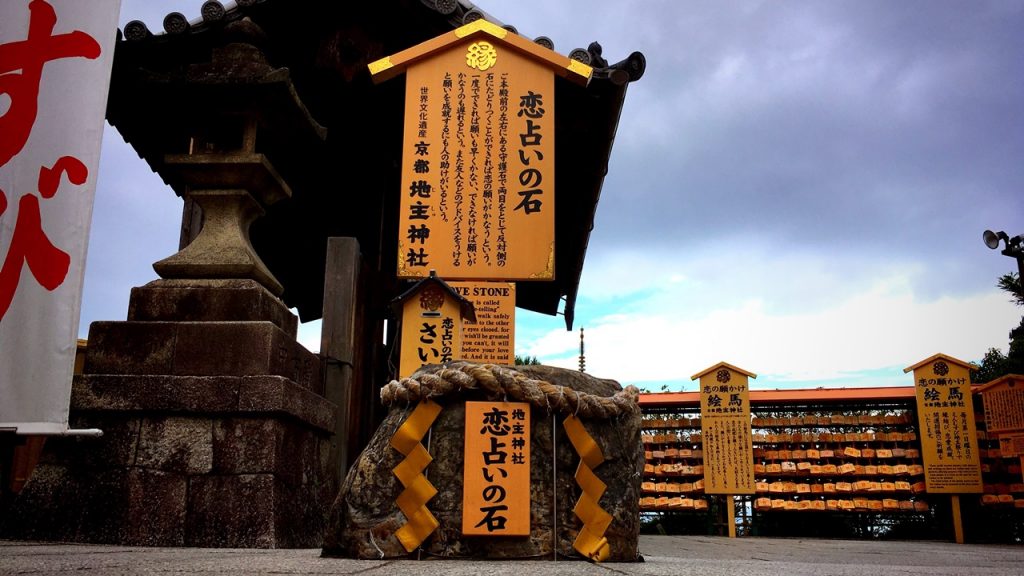
This is the 祓戸大神(Haraedono-okami) enshrined in front of the main hall.
This God is God who is believed to exorcize evil spirits.
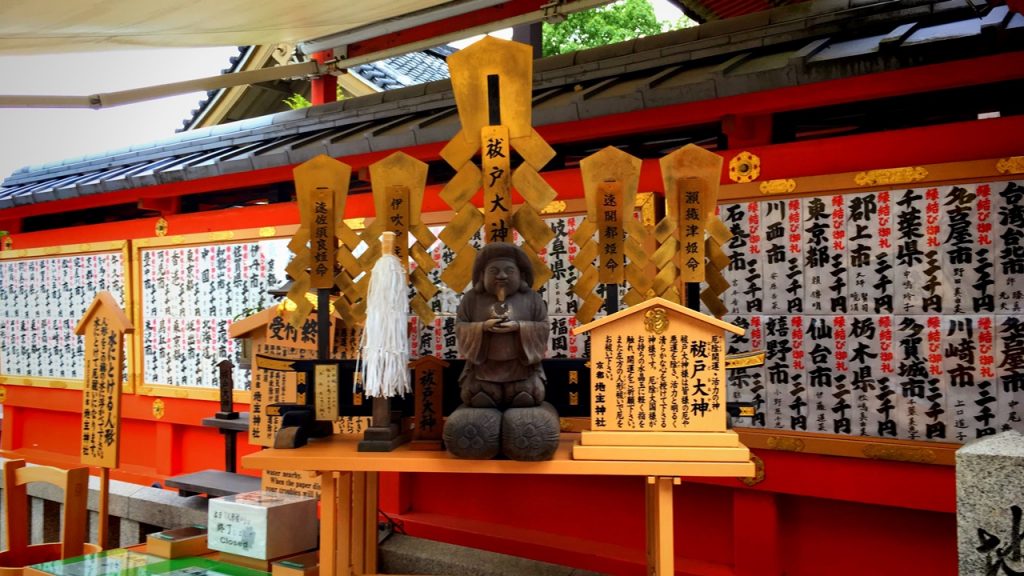
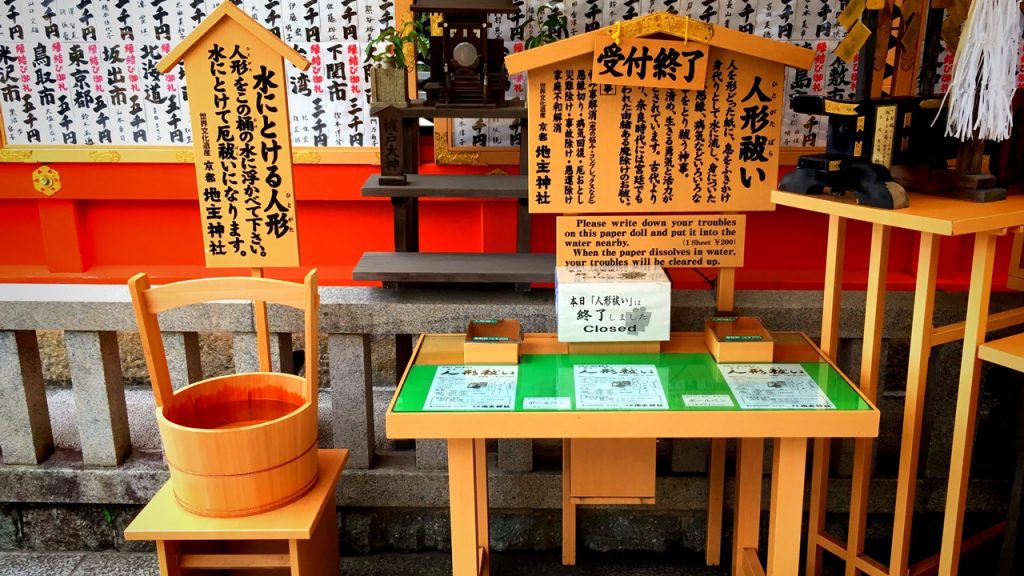
This is a gong of marriage.
It is said that a wish comes true when we sounded three times of gongs.
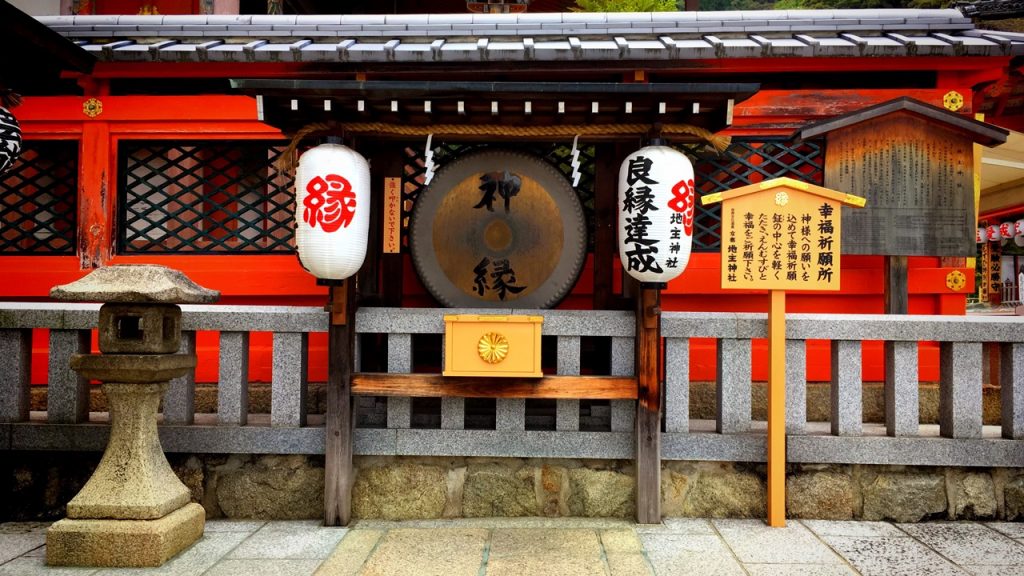
In addition, there are various divine favor spots and a souvenir related to “縁(marriage)” in this Shinto shrine. d(*゚ー゚*)
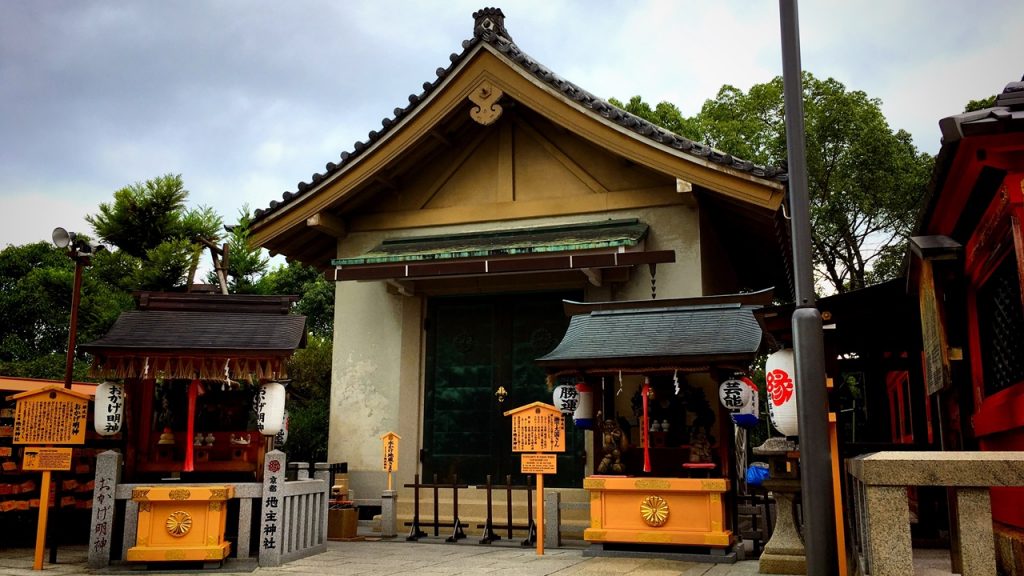
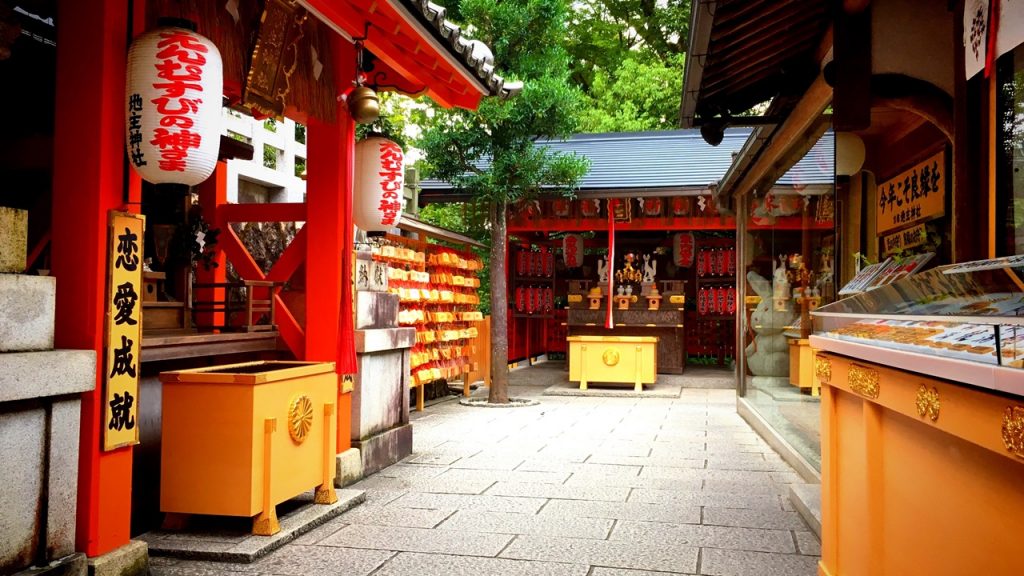
7.Goshuin of Kiyomizu-dera Temple
There are eight kinds of shrine seals in Kiyomizu-dera Temple now.
↓Please refer to this Blog for the details.↓(Japanese text only.)
This time, I got the representative shrine seal of “本堂(Hon-do)”.
The word which can read as “大悲閣(Daihikaku)” is written to Goshuin with a sumi.
“大悲閣(Daihikaku)” is the word which means the deep compassion of Kannon.
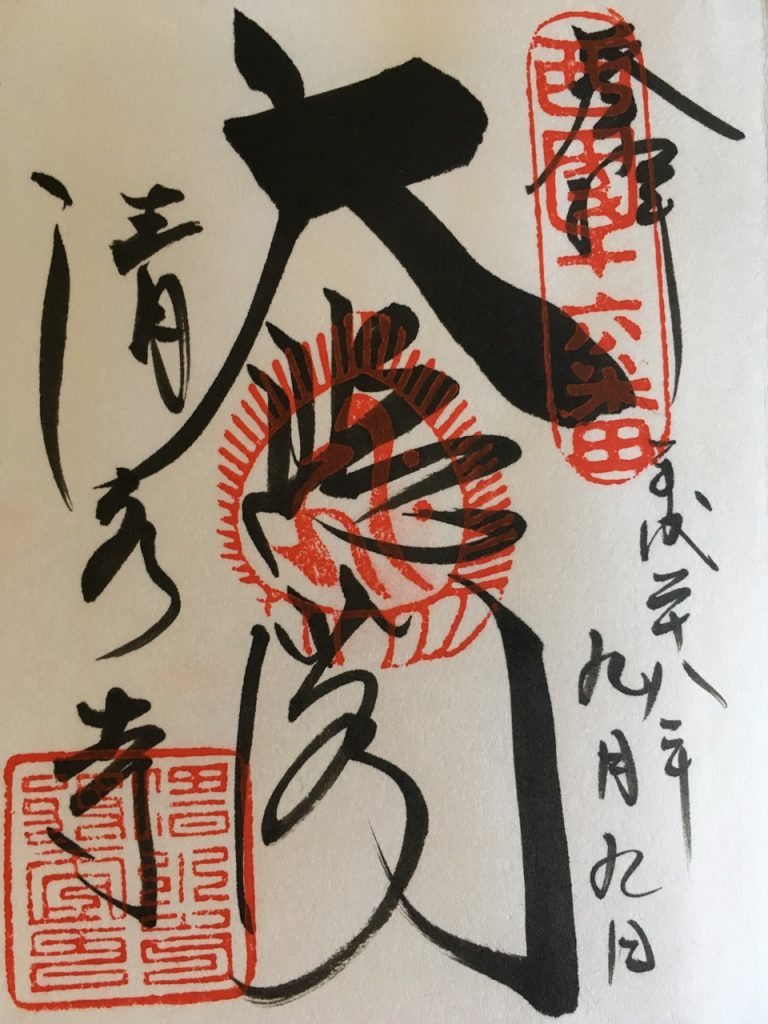
8.How to get to Kiyomizu-dera Temple
●The map of Kiyomizu-dera Temple
●The Map of World Heritage ‘Historic Monuments of Ancient Kyoto’
The nearest station of Kiyomizu-dera Temple is “Keihan Gion-shijo Station” or “Keihan Kiyomizu-gojo Station”.
Kiyomizu-gojo Station is near to the destination.
It is about 30-minutes walk from the station.
When it goes from Gion-shijo Station, it is a route going along Ichinen-zaka and Ninen-zaka.
■About Ichinen-zaka and Ninen-zaka
■Keihan Kiyomizu-gojo Station→Kiyomizu-dera Temple
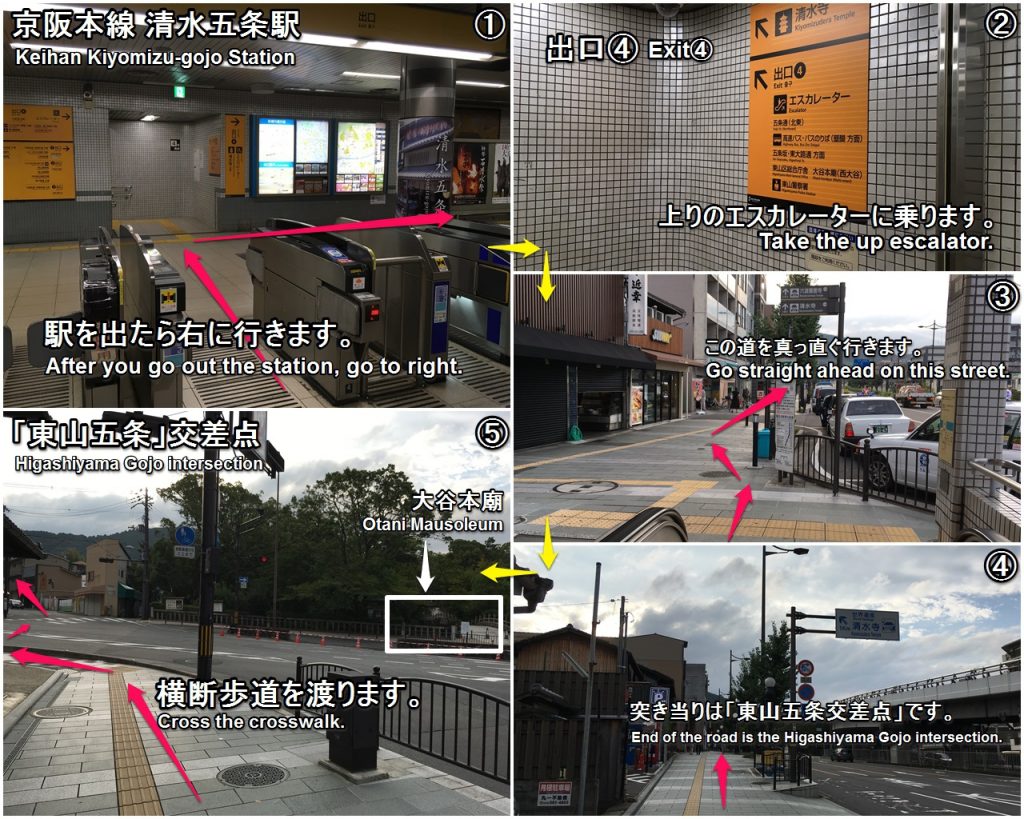

How did you like it?
Please try to go to this place.
Have a nice trip! XD
<Let’s search the sightseeing information of Kansai in Japan on ‘Japan’s Travel Manual‘!!>
<This site introduces the easiest way to get Japanese (Kansai) sightseeing spots to you.>

